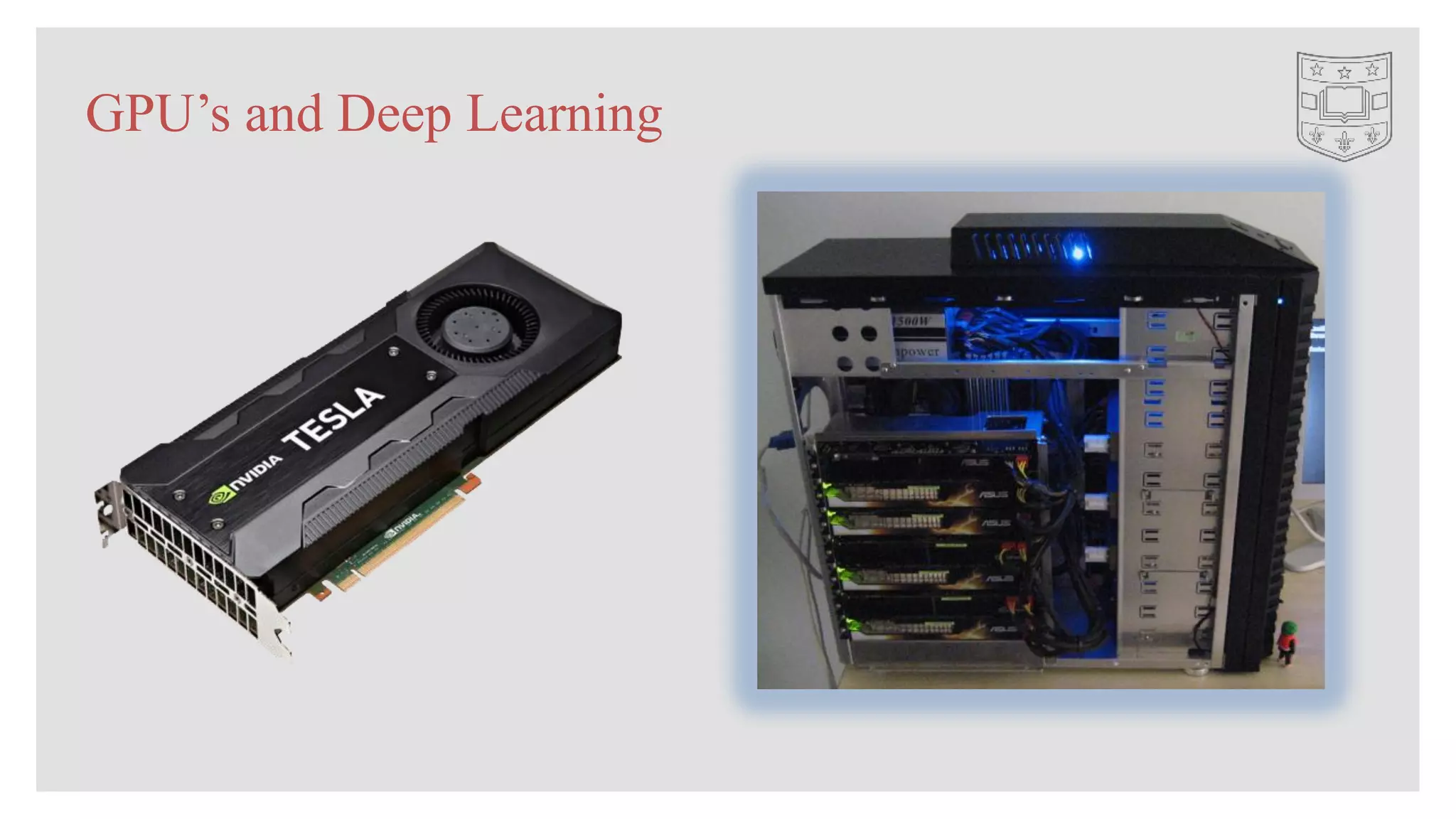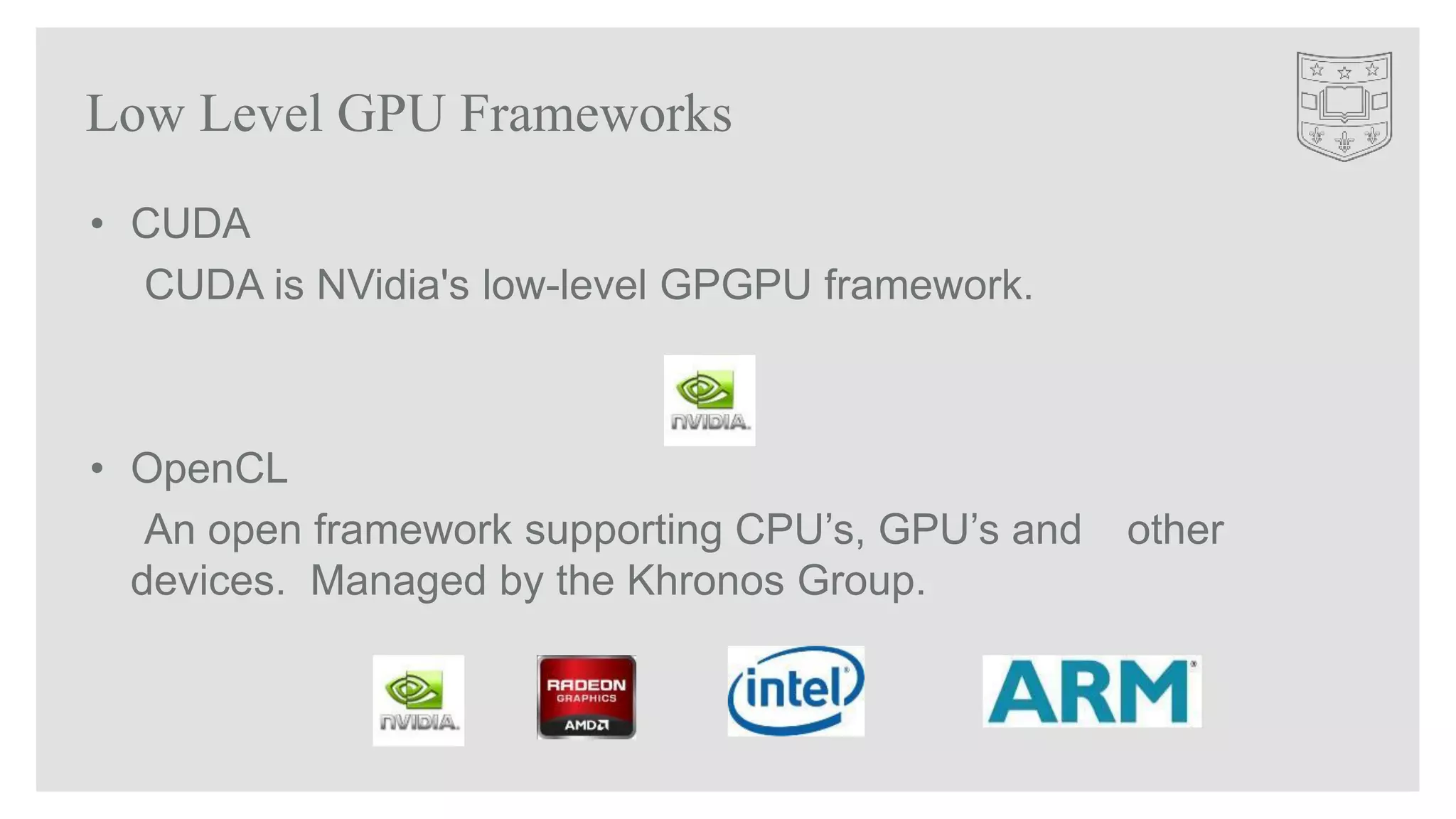The document is a presentation on getting started with Keras and TensorFlow for deep learning, presented by Jeff Heaton at the AI Summit 2017. It covers topics including the deep learning framework landscape, various types of neural networks (CNNs, RNNs), classification, regression tasks, and practical implementations using Python tools like Keras and TensorFlow. Additionally, it provides code examples for building models and discusses the challenges of preparing real-world data for predictive modeling.
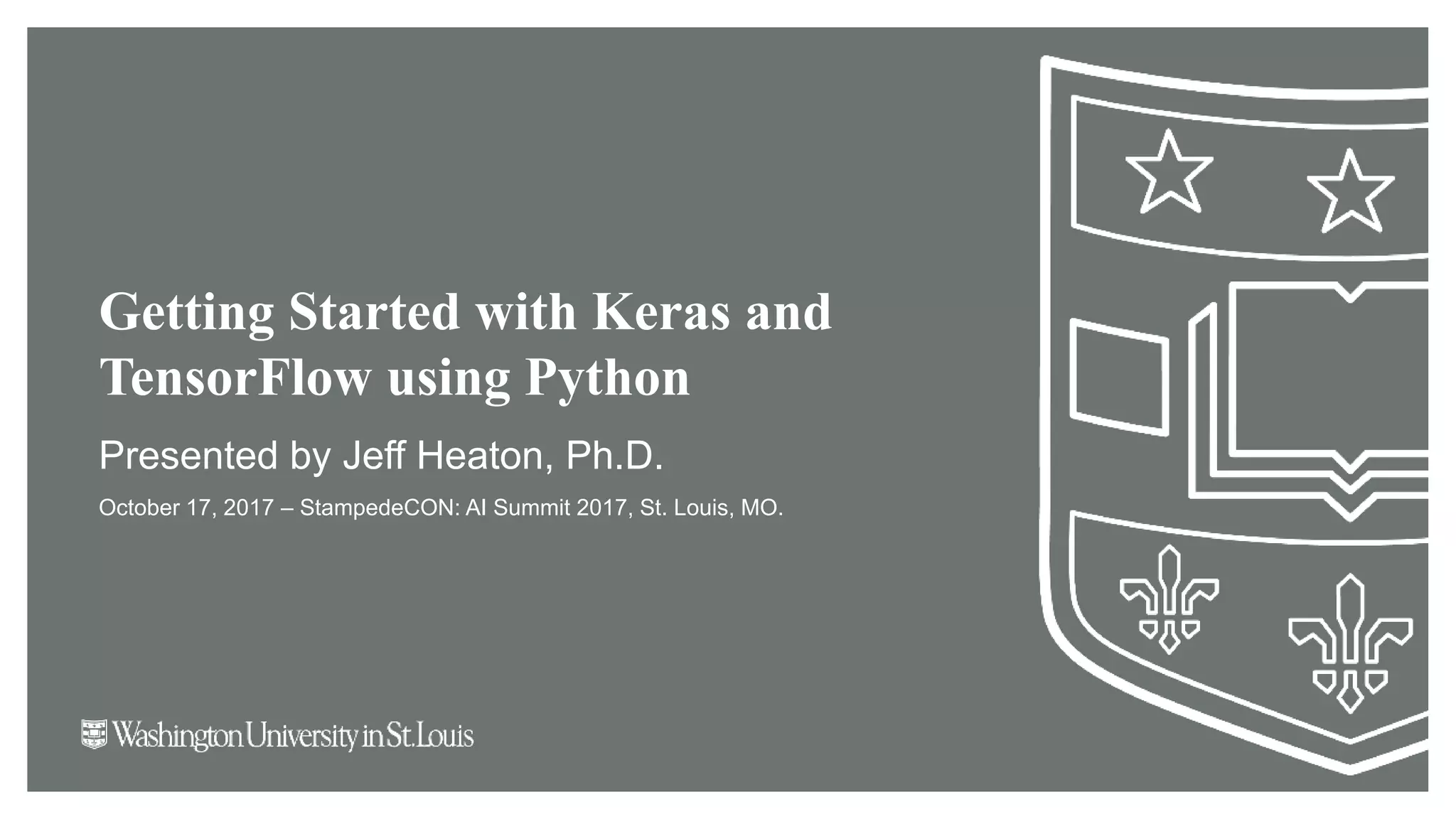

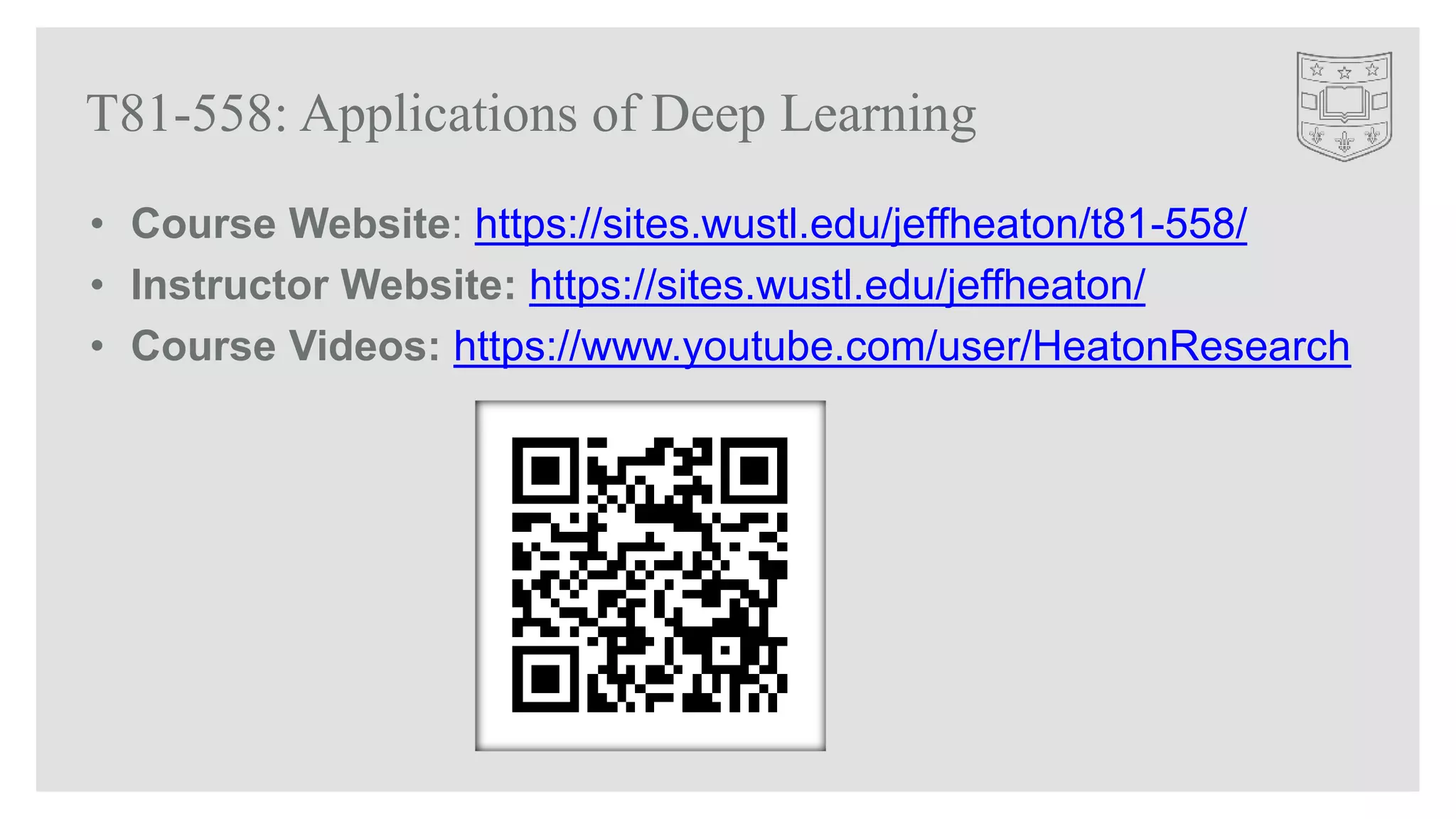
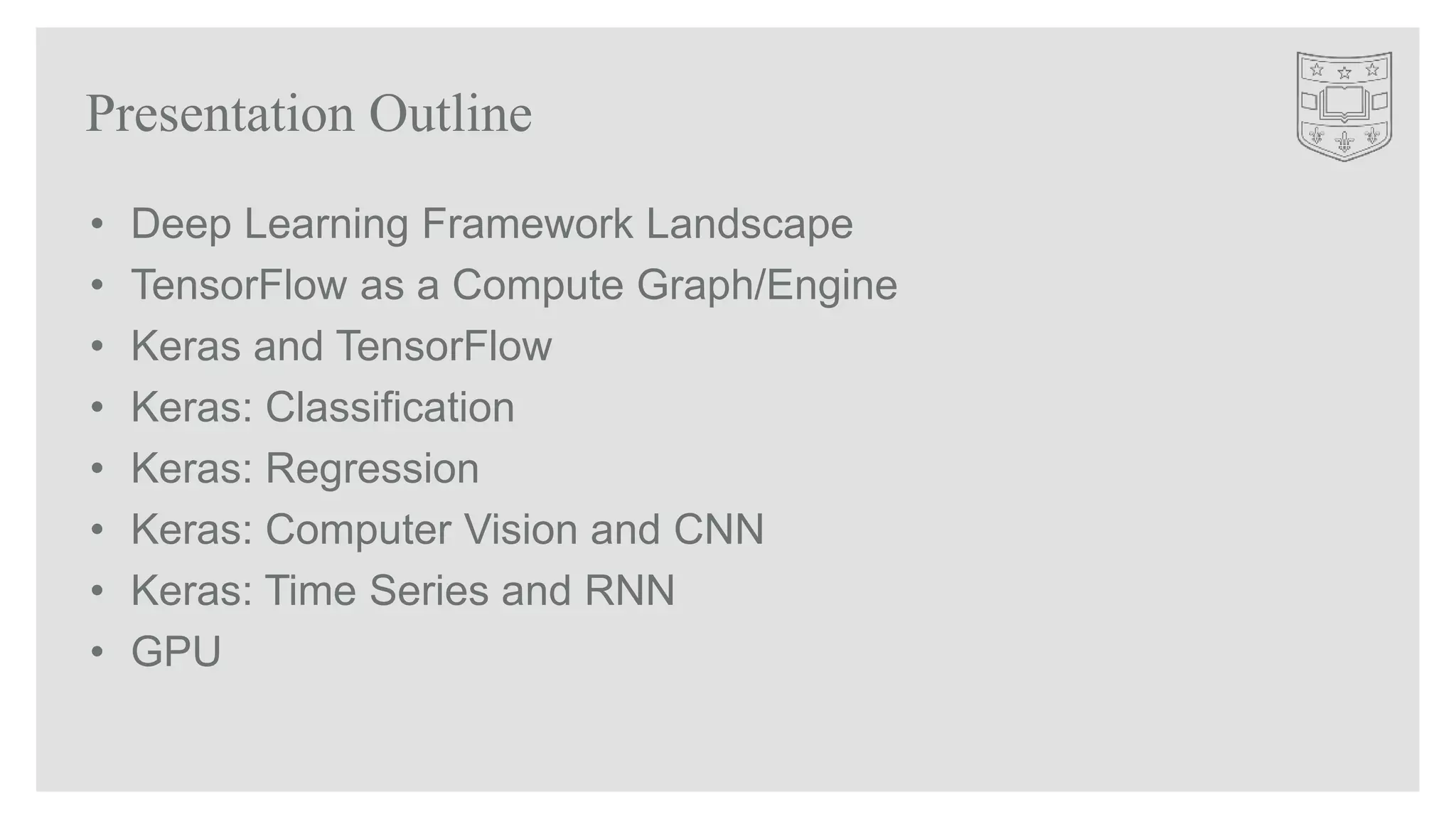
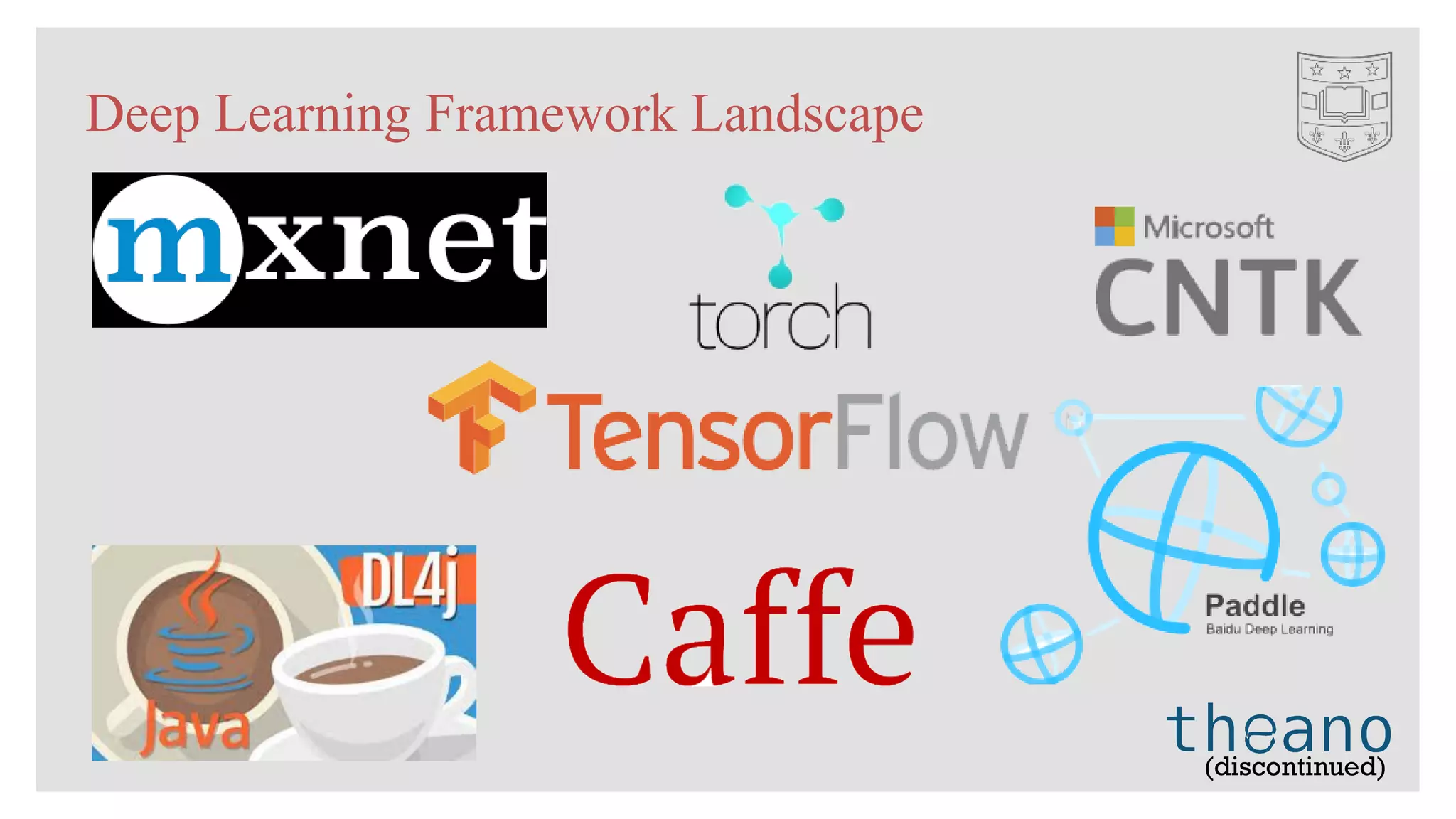
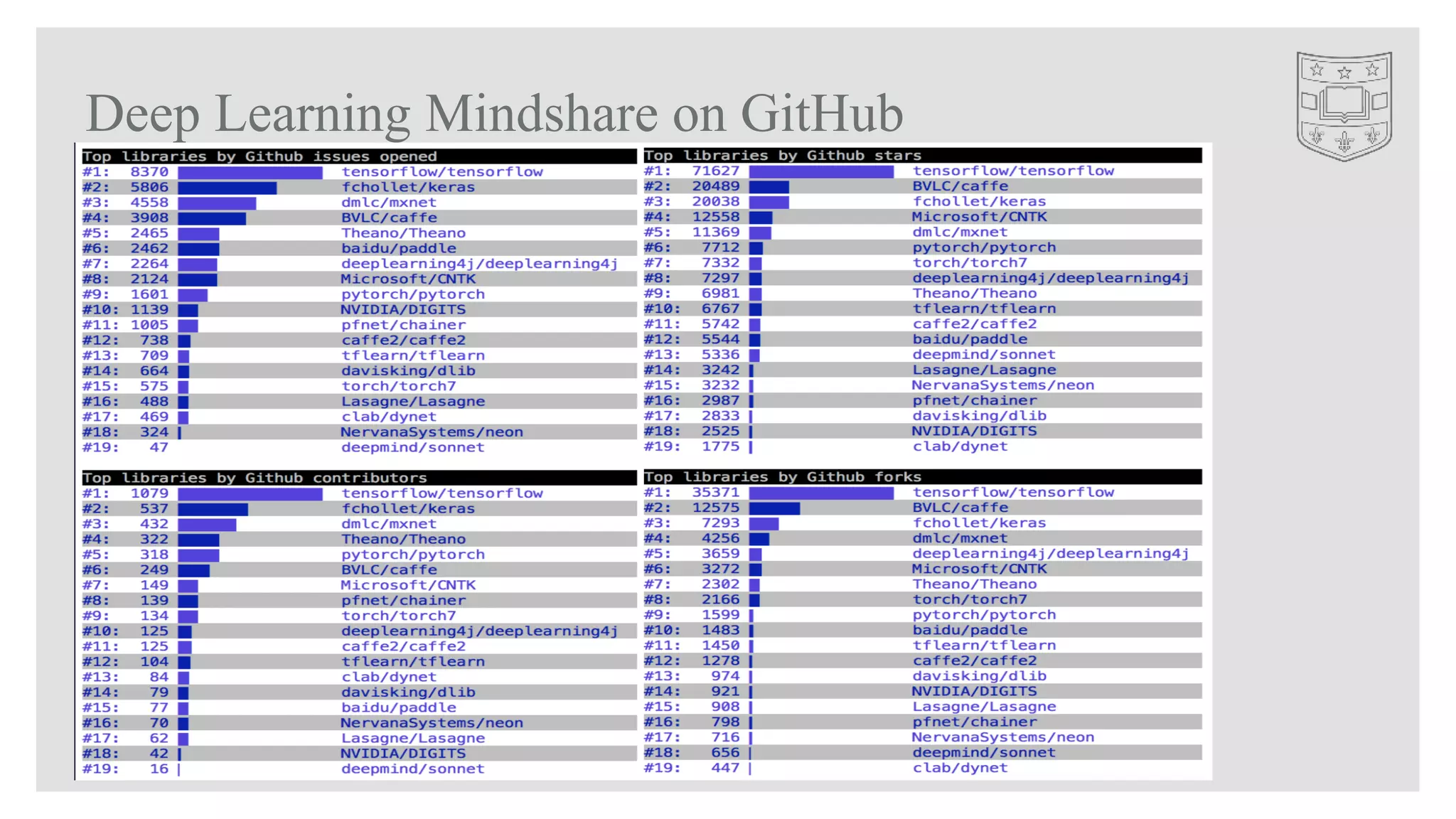
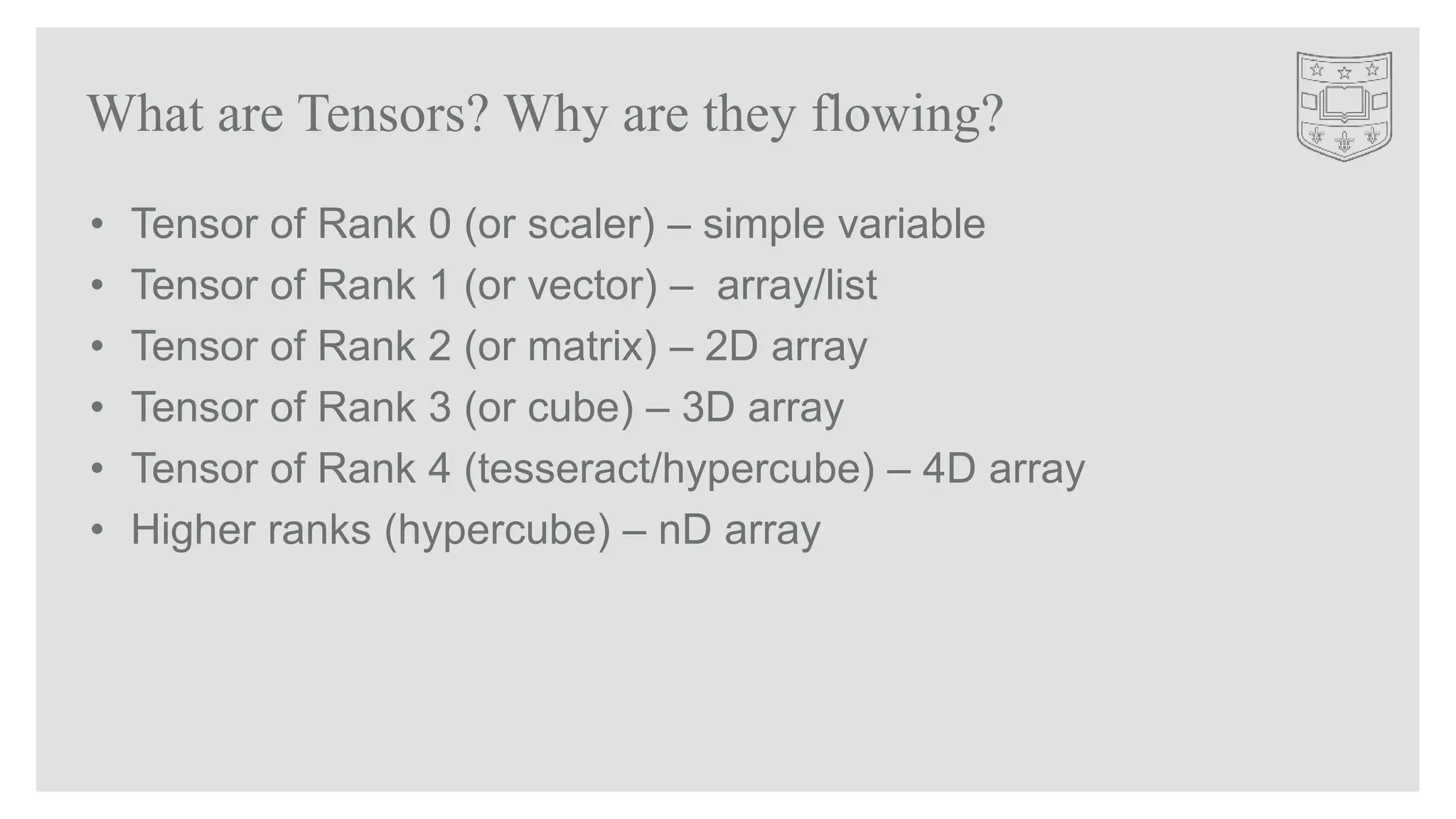

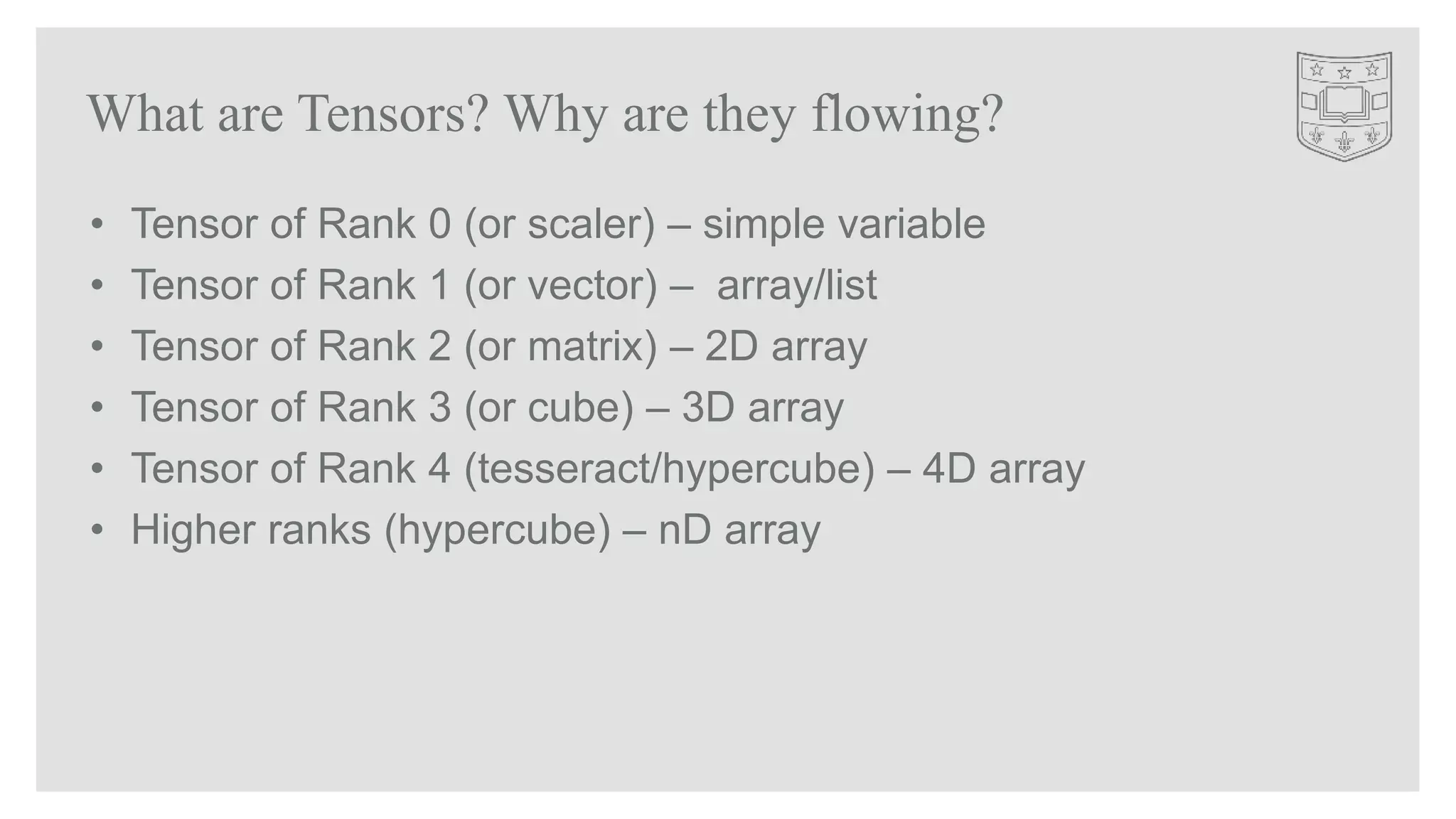
![What is a Computation Graph?
import tensorflow as tf
matrix1 = tf.constant([[3., 3.]])
matrix2 = tf.constant([[2.],[2.]])
product = tf.matmul(matrix1, matrix2)
with tf.Session() as sess:
result = sess.run([product])
print(result)](https://image.slidesharecdn.com/gettingstartedwithkerasandtensorflow-stampedeconaisummit2017-171030121044/75/Getting-Started-with-Keras-and-TensorFlow-StampedeCon-AI-Summit-2017-10-2048.jpg)
![Computation Graph with Variables
import tensorflow as tf
sess = tf.InteractiveSession()
x = tf.Variable([1.0, 2.0])
a = tf.constant([3.0, 3.0])
x.initializer.run()
sub = tf.subtract(x, a)
print(sub.eval())
# ==> [-2. -1.]
sess.run(x.assign([4.0, 6.0]))
print(sub.eval())
# ==> [1. 3.]](https://image.slidesharecdn.com/gettingstartedwithkerasandtensorflow-stampedeconaisummit2017-171030121044/75/Getting-Started-with-Keras-and-TensorFlow-StampedeCon-AI-Summit-2017-11-2048.jpg)
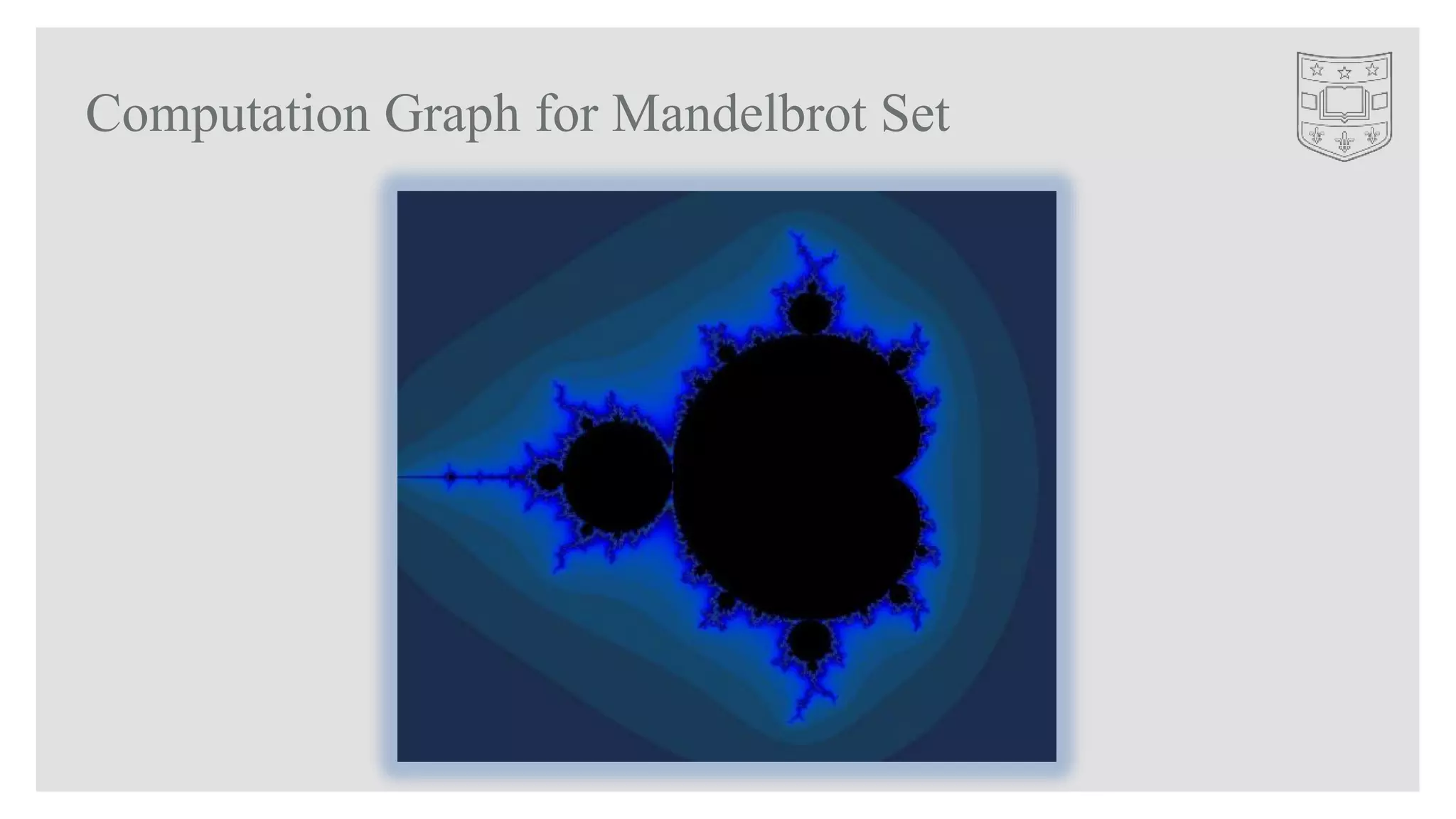
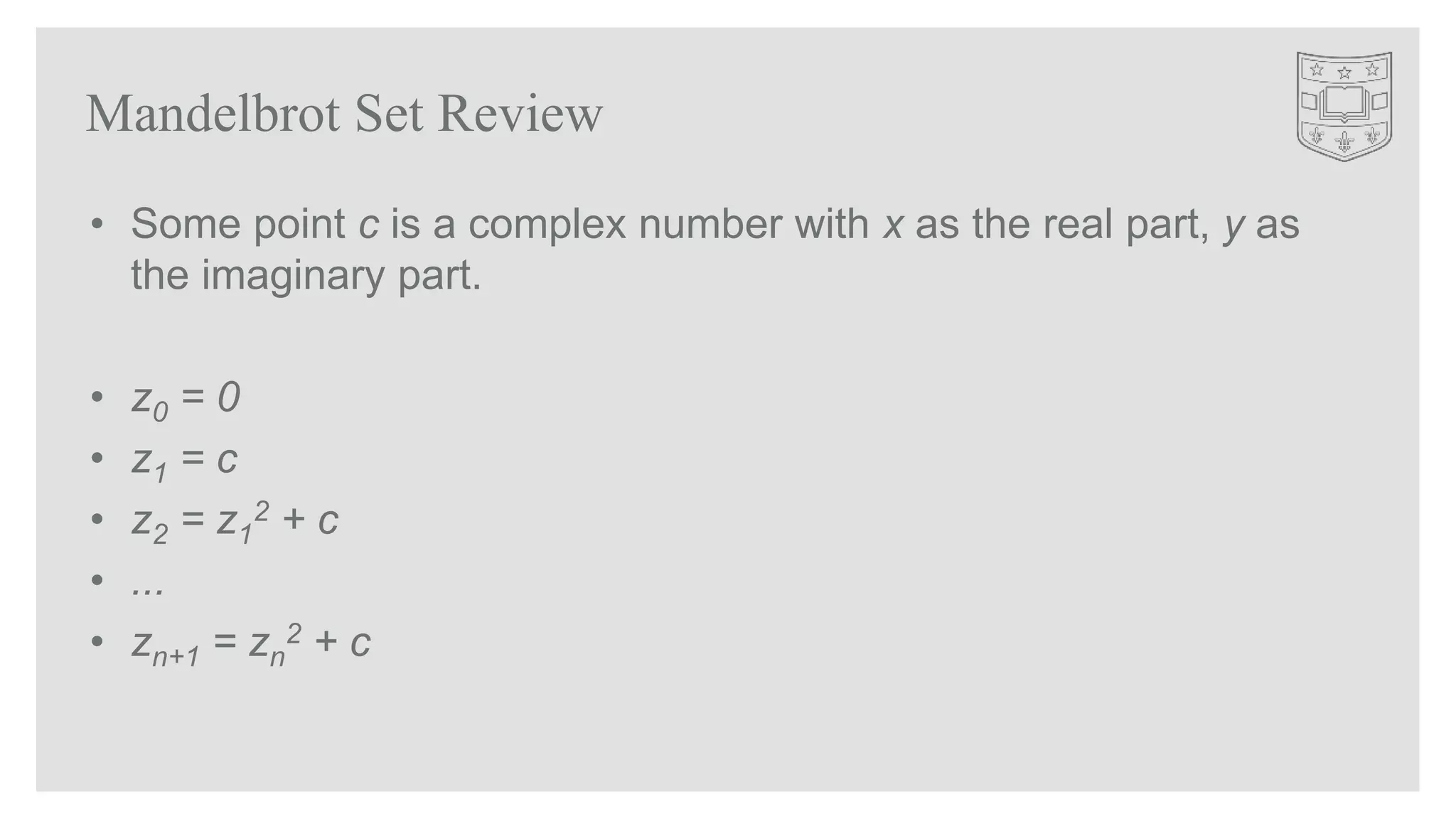
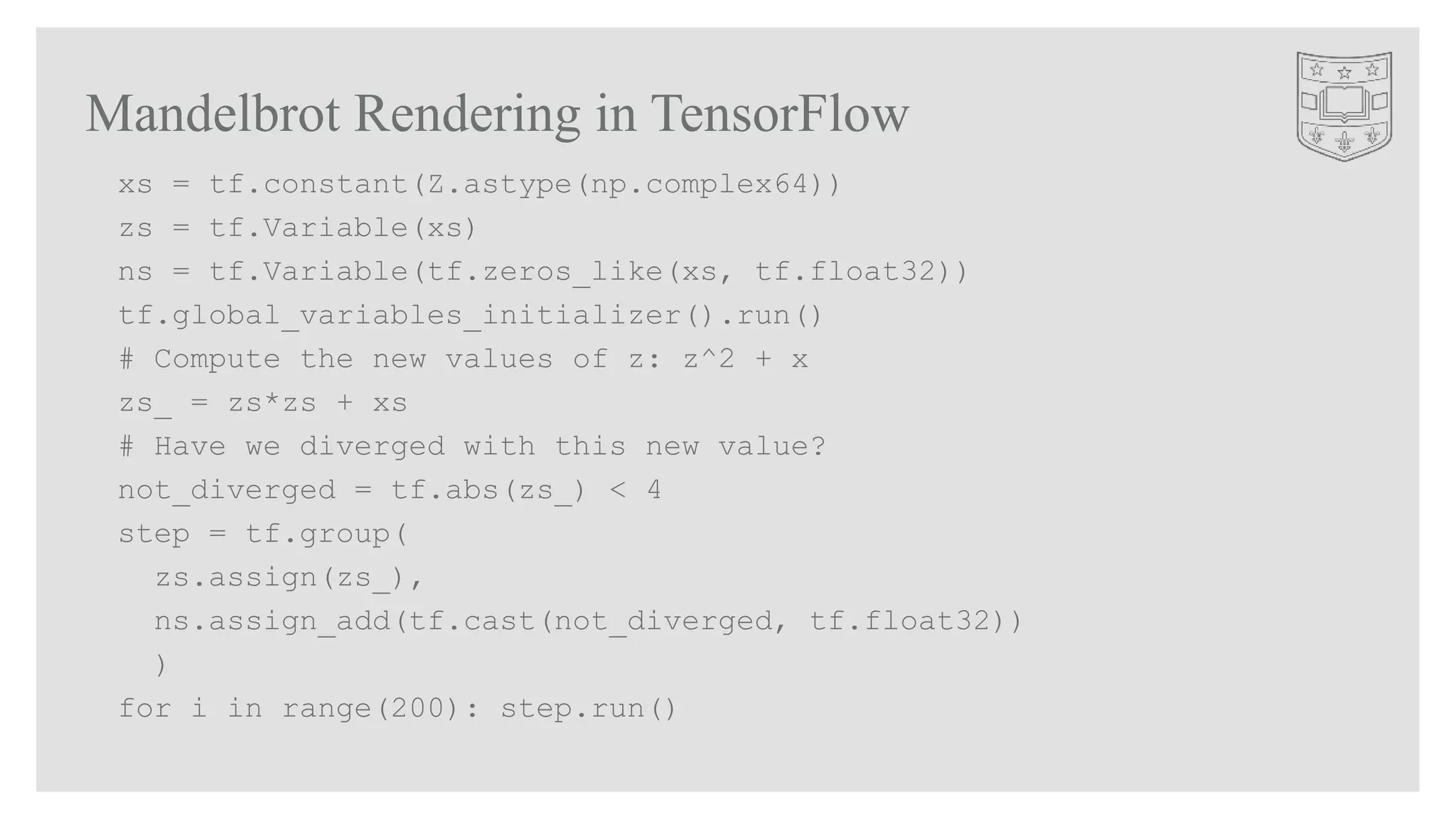
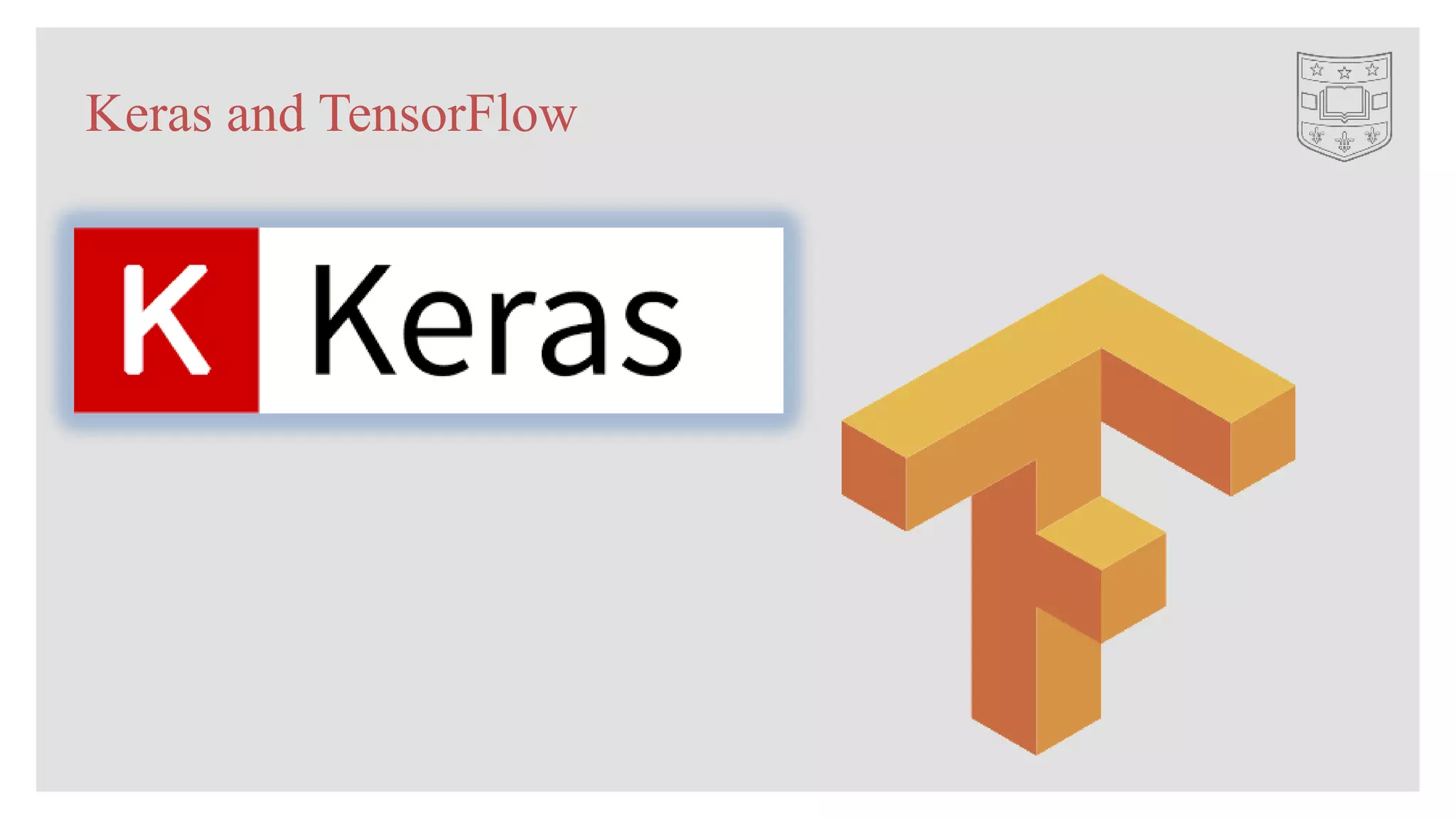
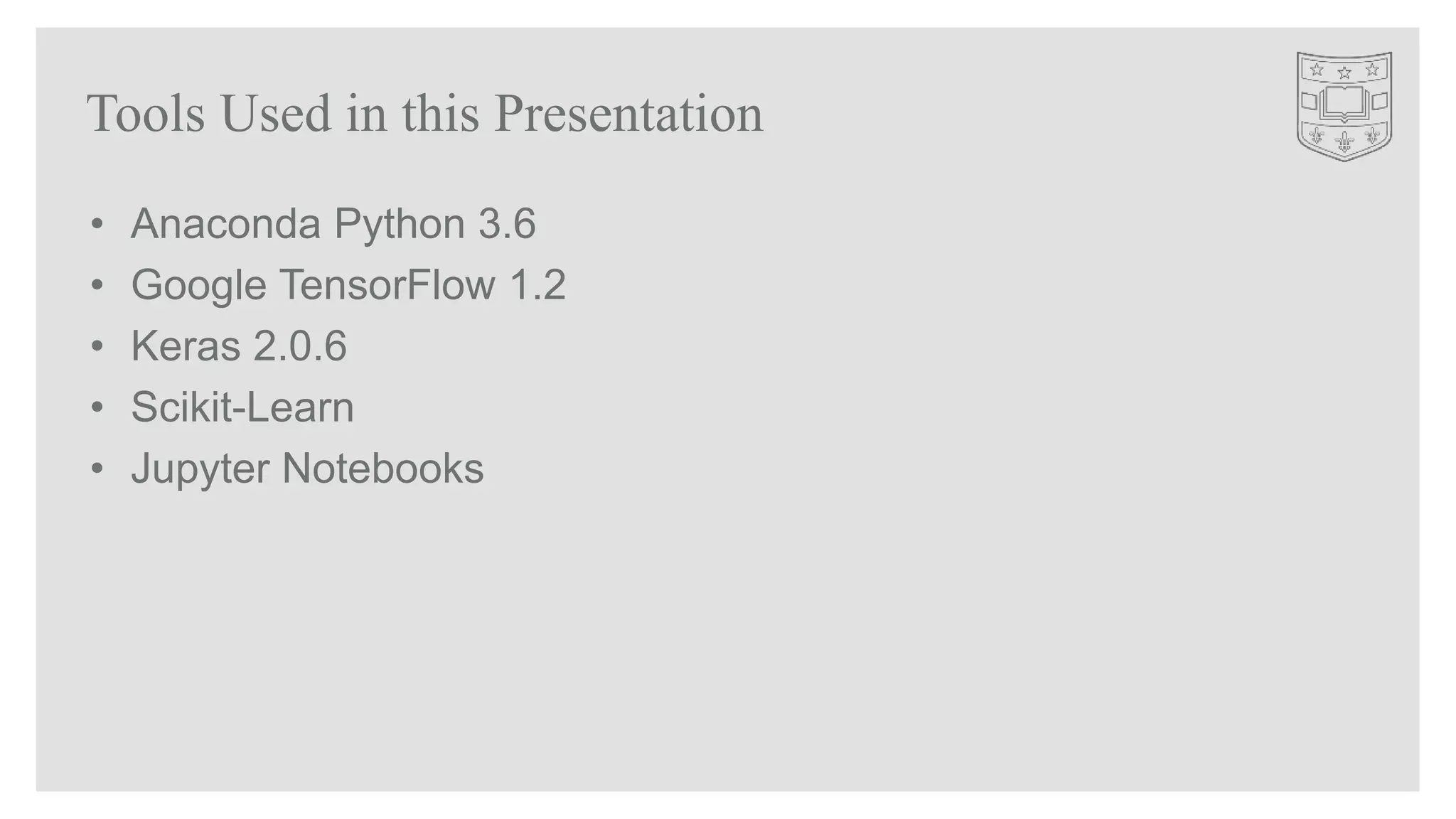
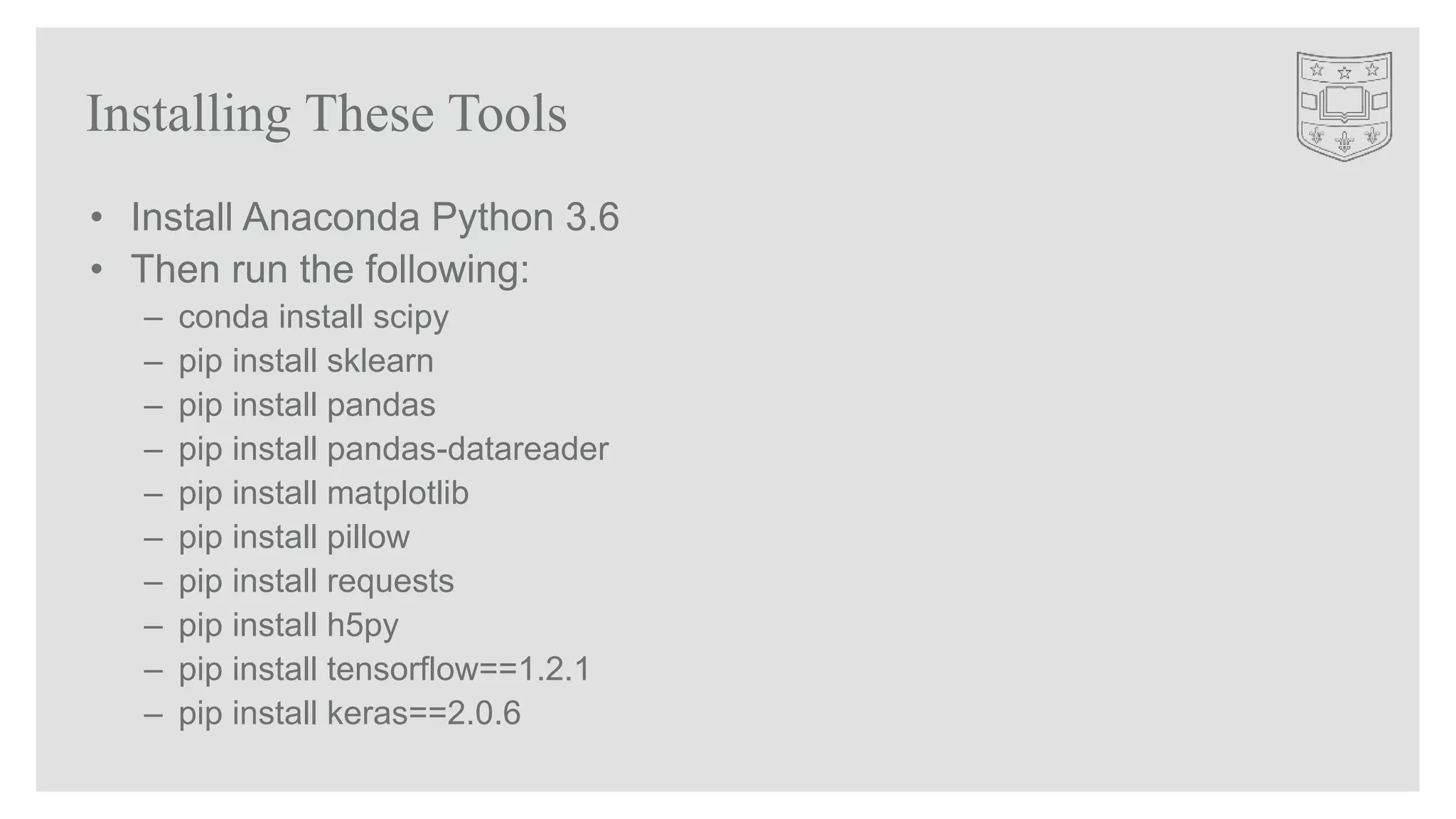
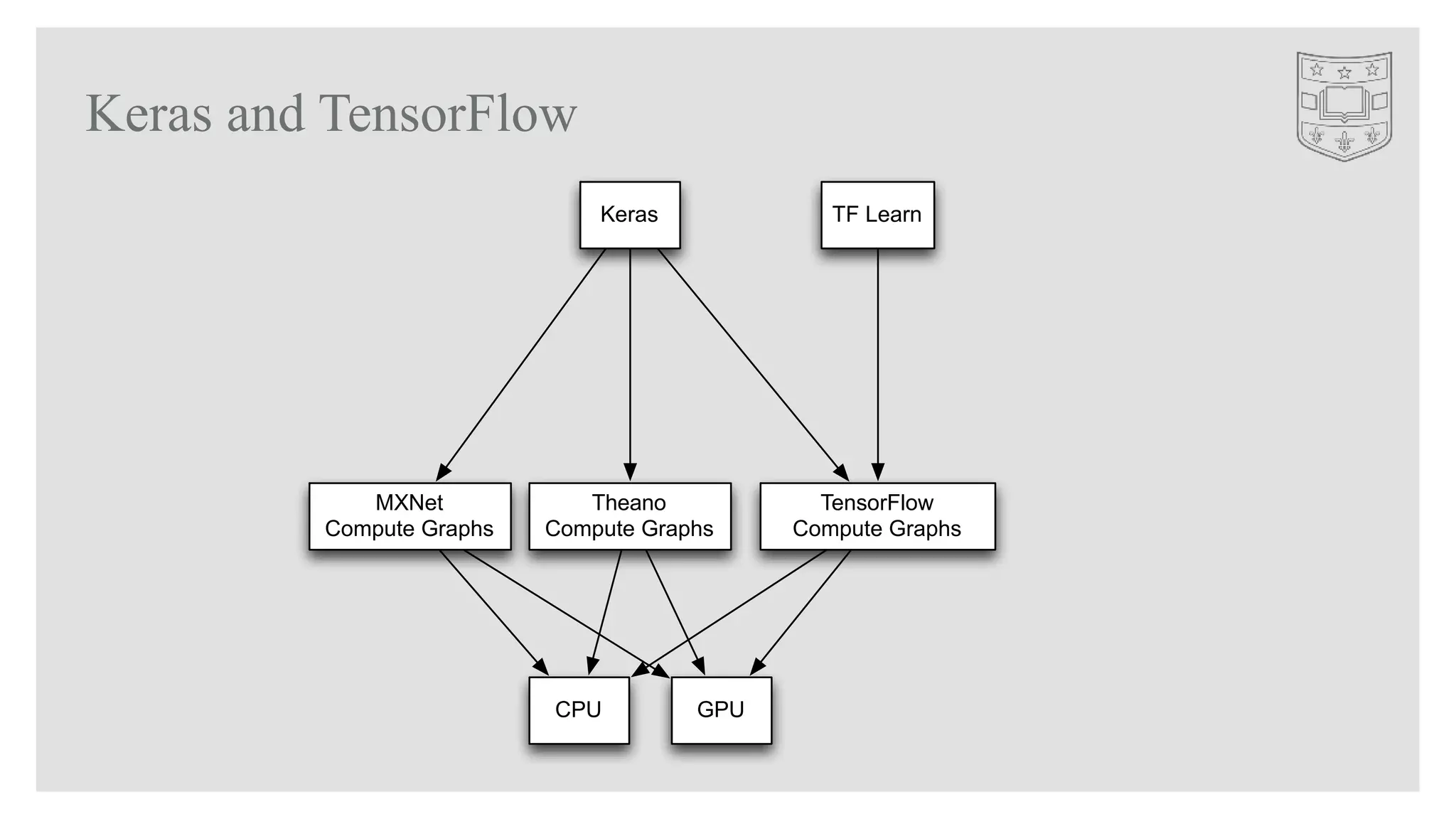
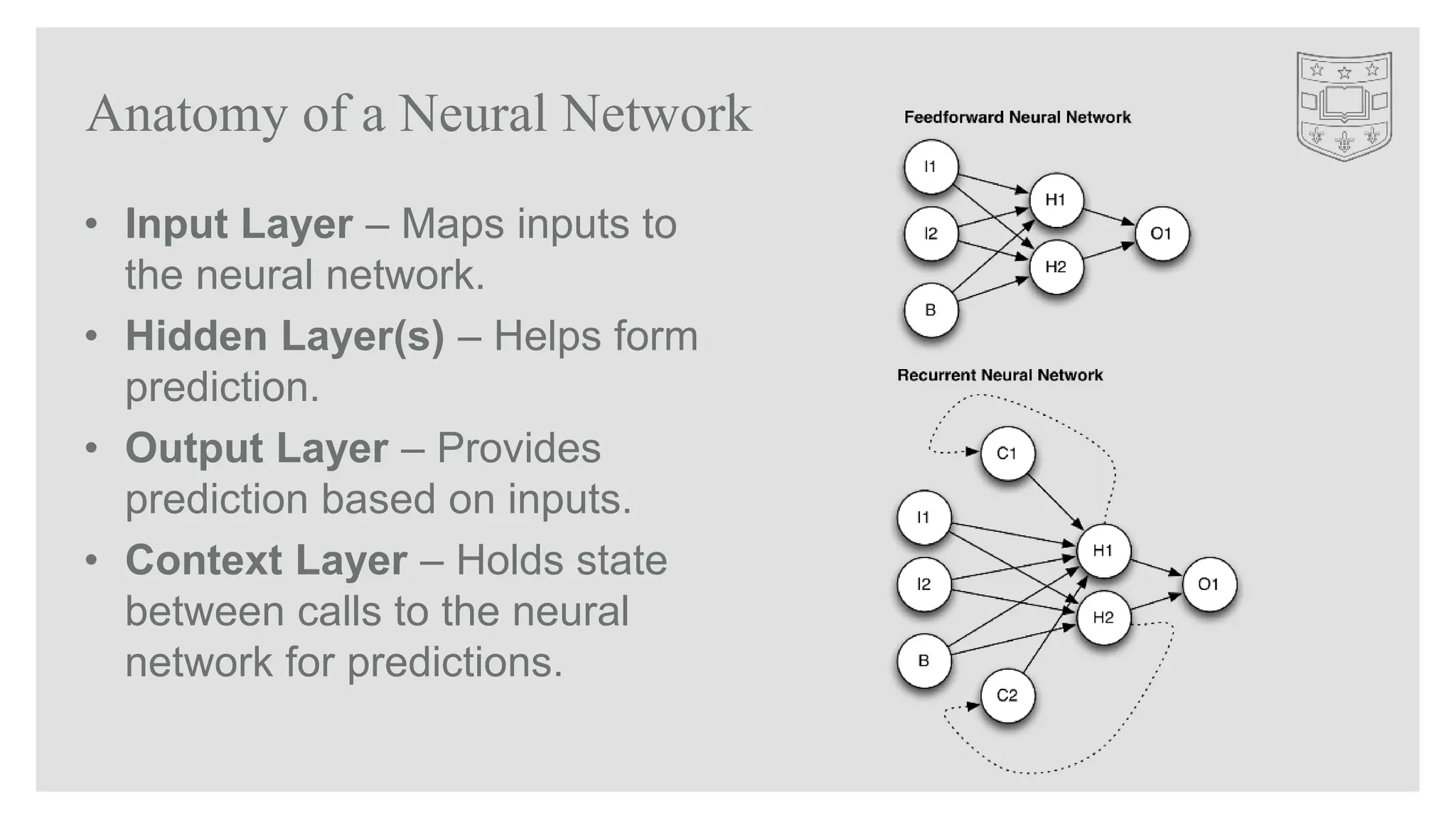
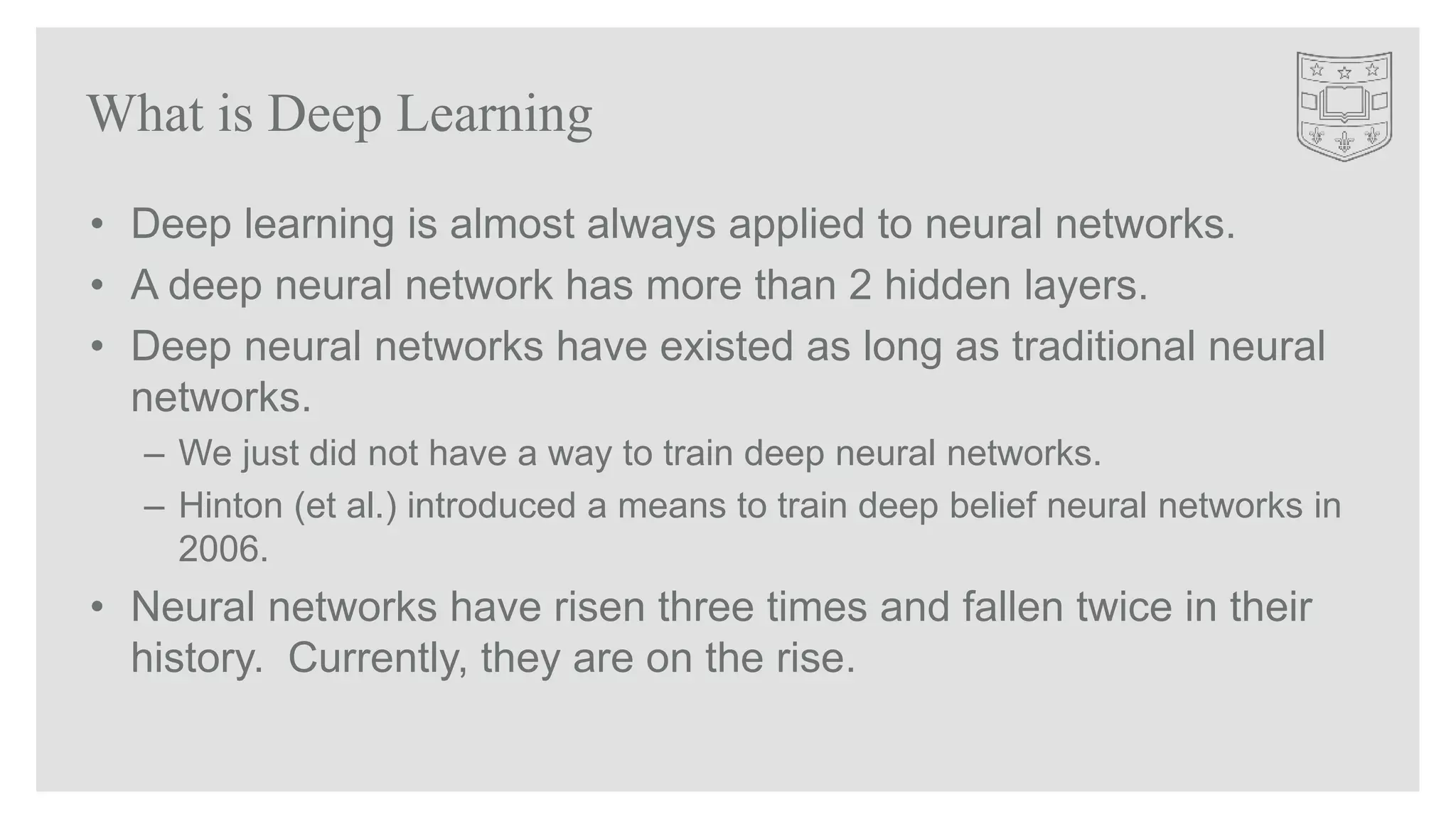
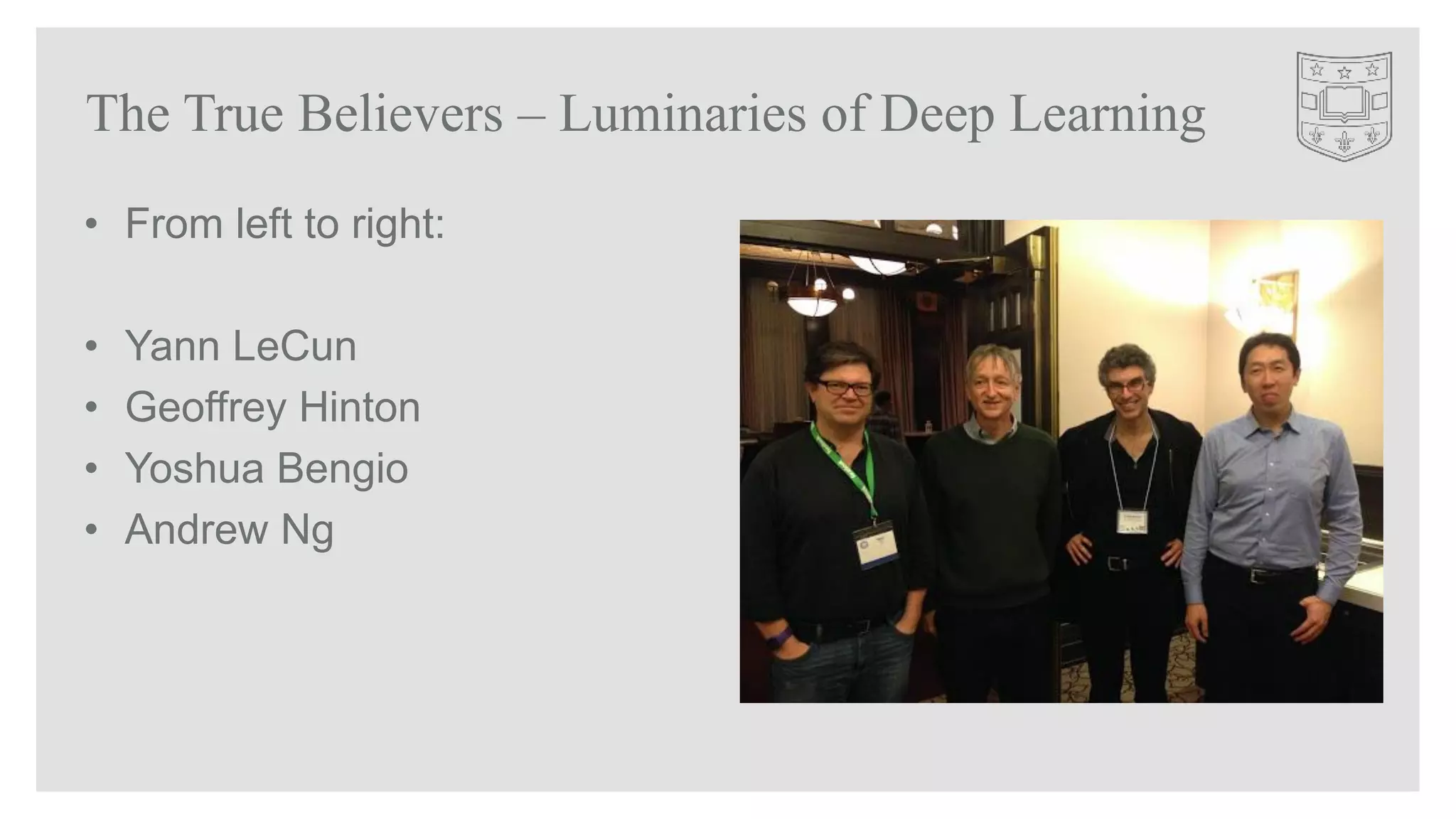


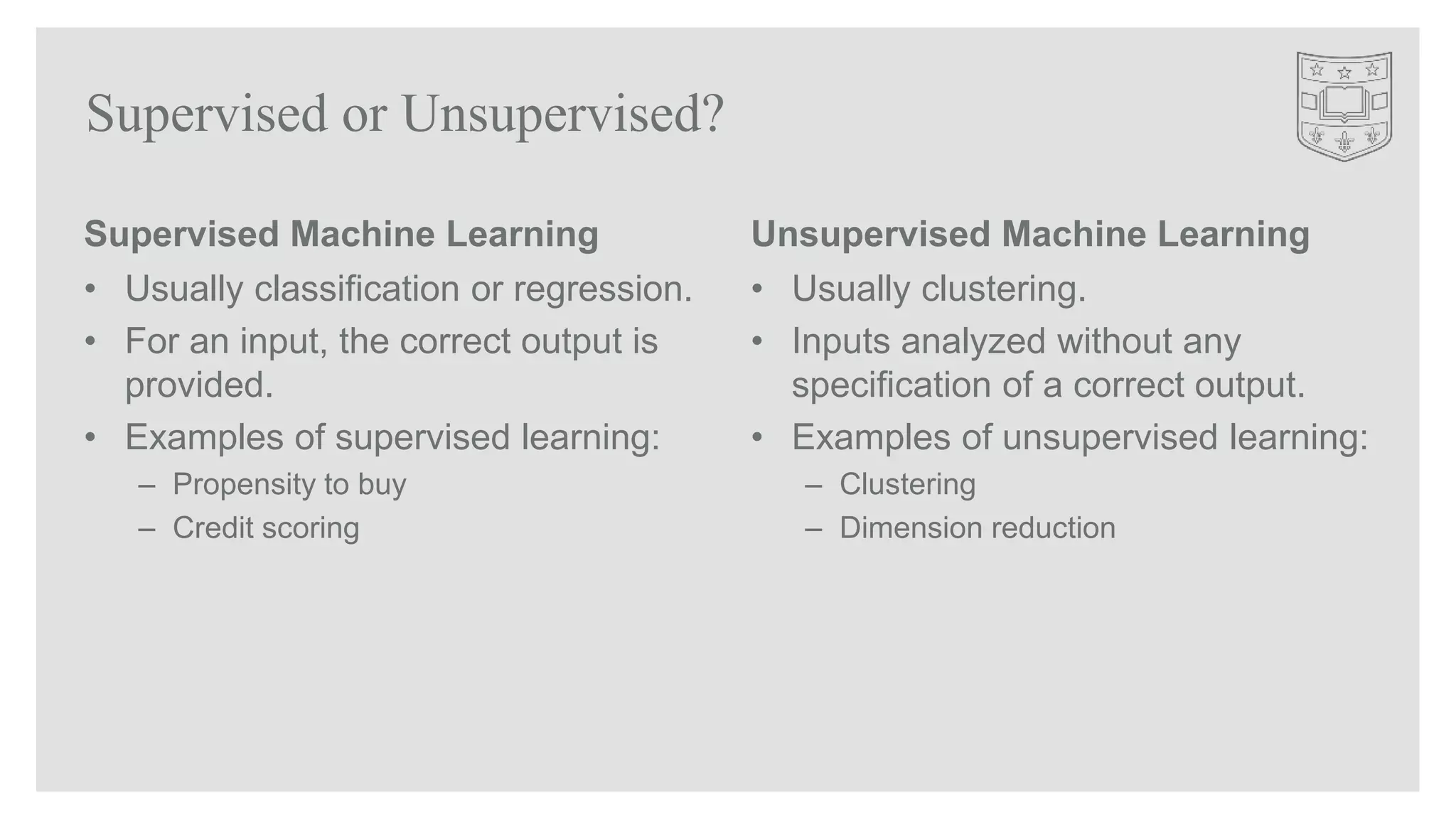
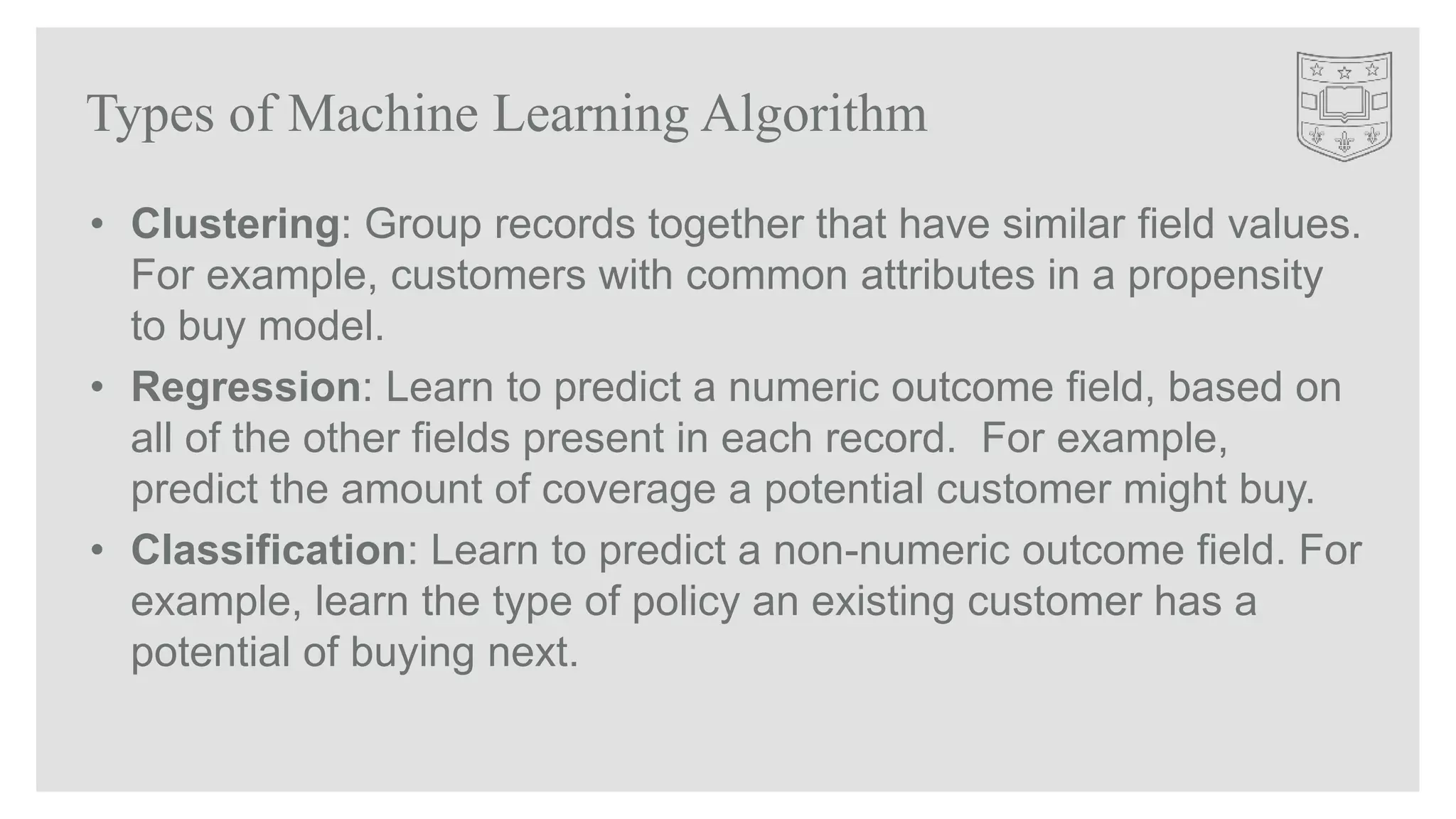

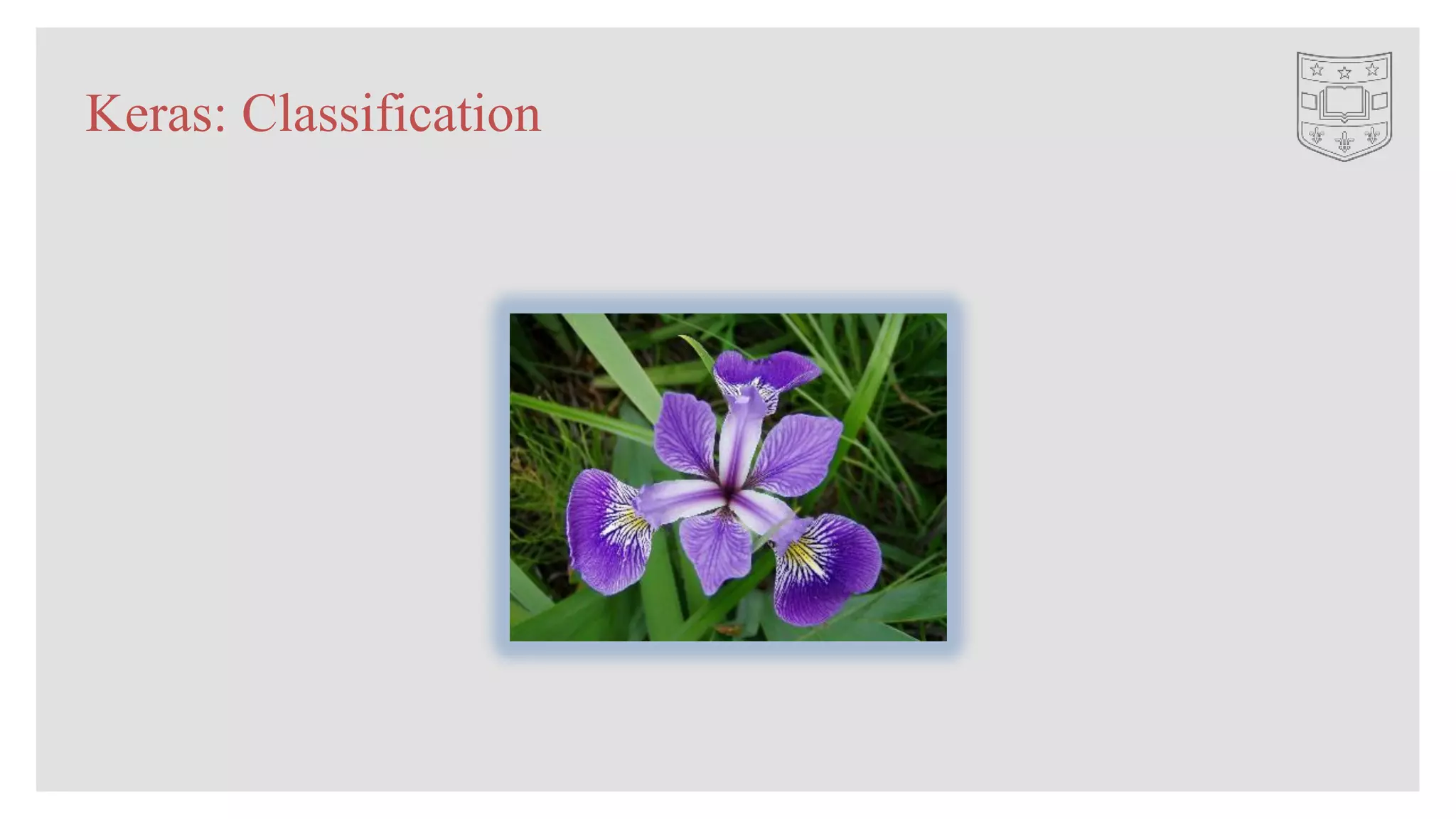
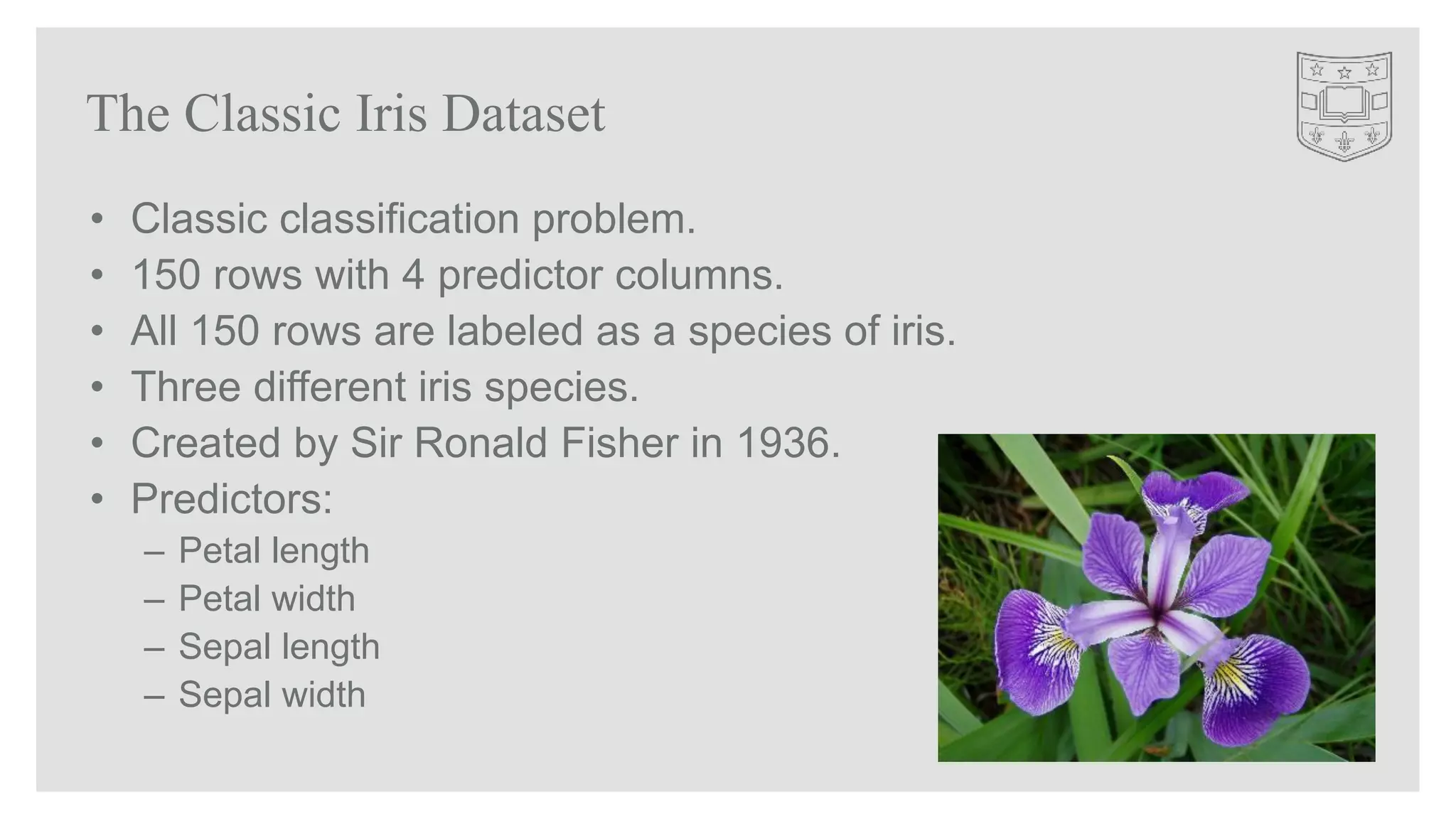
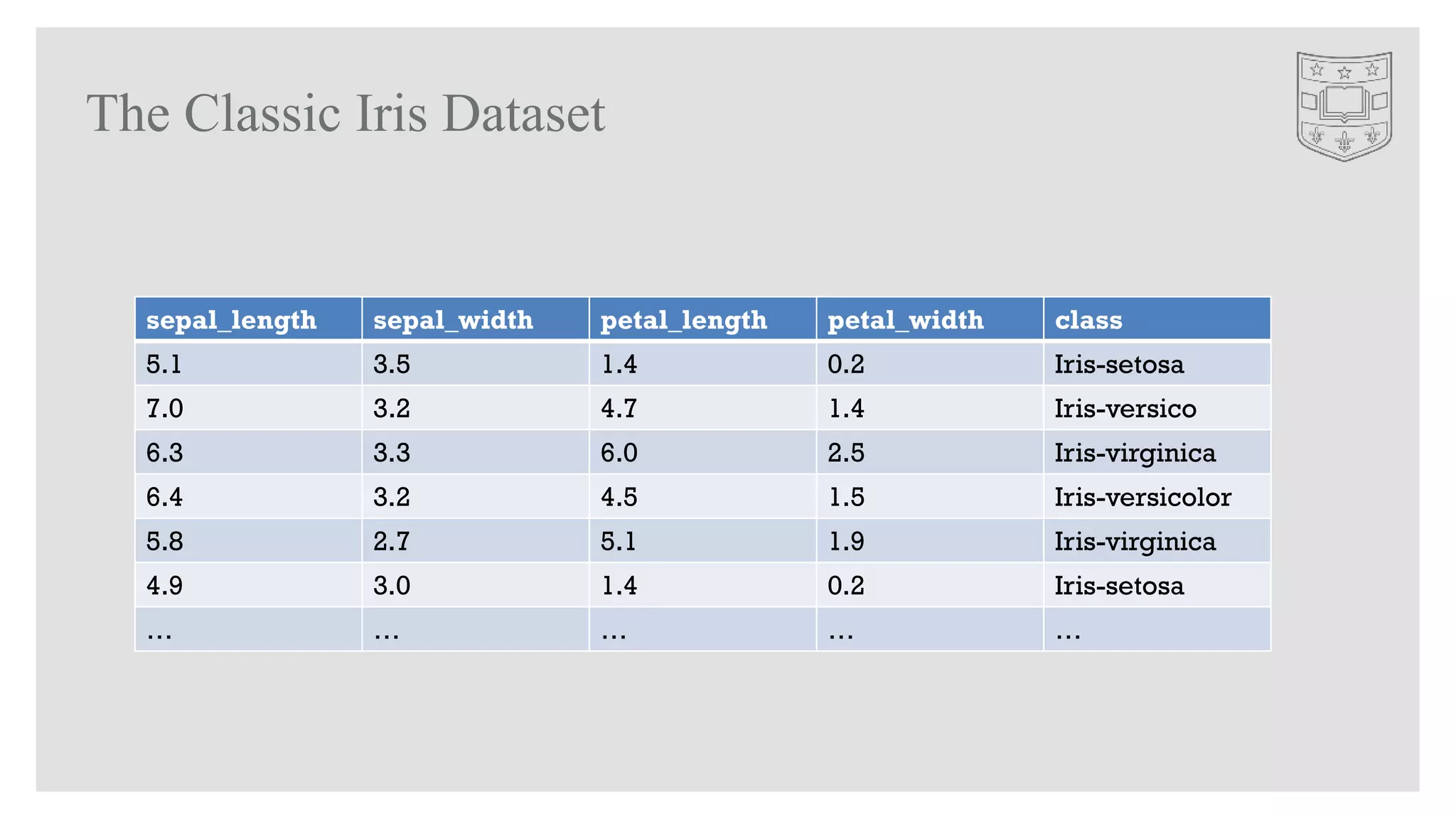
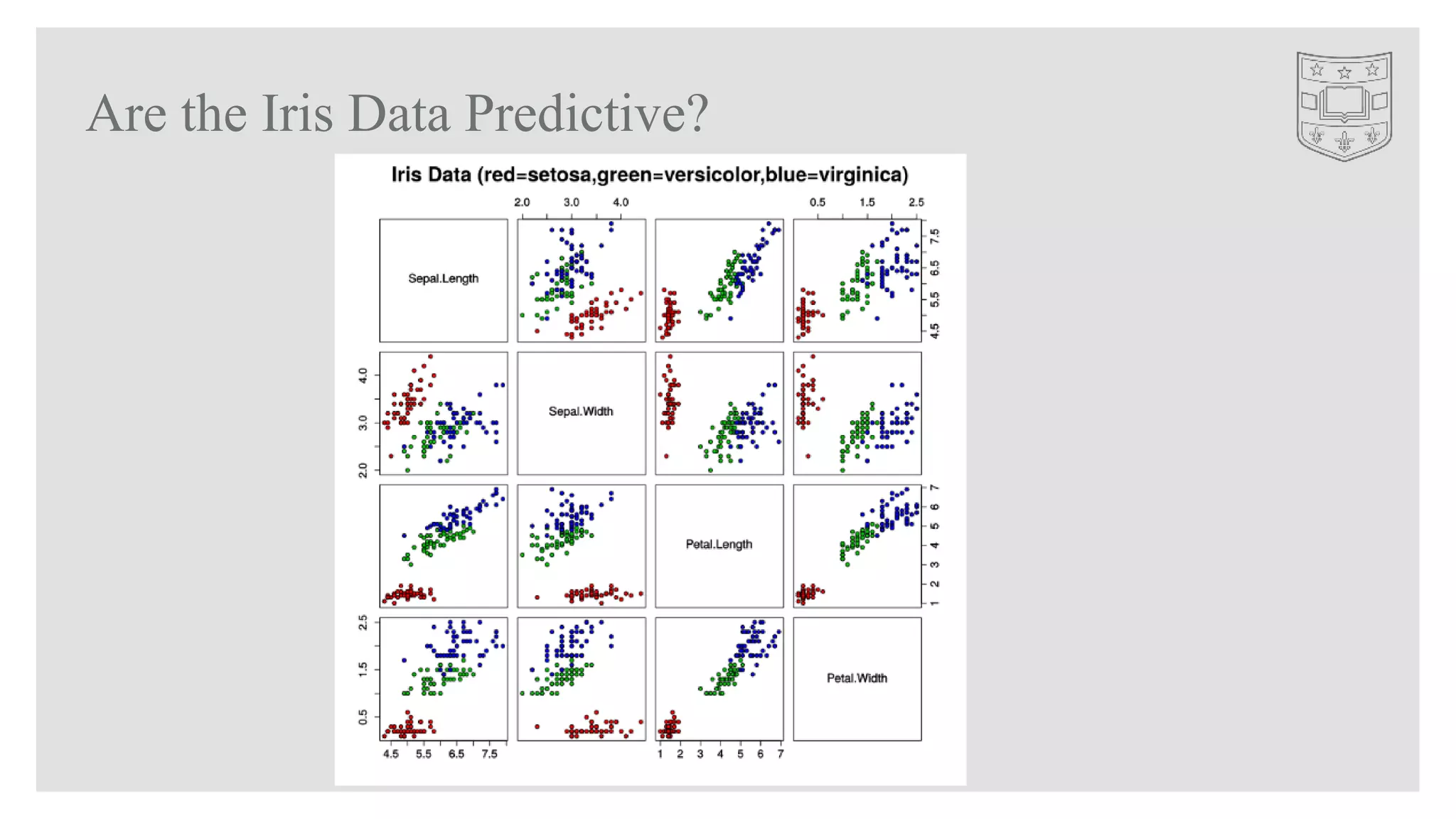
![Keras Classification: Load and Train/Test Split
path = "./data/"
filename = os.path.join(path,"iris.csv")
df = pd.read_csv(filename,na_values=['NA','?'])
species = encode_text_index(df,"species")
x,y = to_xy(df,"species")
# Split into train/test
x_train, x_test, y_train, y_test = train_test_split(
x, y, test_size=0.25, random_state=42)](https://image.slidesharecdn.com/gettingstartedwithkerasandtensorflow-stampedeconaisummit2017-171030121044/75/Getting-Started-with-Keras-and-TensorFlow-StampedeCon-AI-Summit-2017-31-2048.jpg)
![Keras Classification: Build NN and Fit
model = Sequential()
model.add(Dense(10, input_dim=x.shape[1],
kernel_initializer='normal', activation='relu'))
model.add(Dense(1, kernel_initializer='normal'))
model.add(Dense(y.shape[1],activation='softmax'))
model.compile(loss='categorical_crossentropy', optimizer='adam')
monitor = EarlyStopping(monitor='val_loss', min_delta=1e-3,
patience=5, verbose=1, mode='auto')
model.fit(x,y,validation_data=(x_test,y_test),callbacks=[monitor],ve
rbose=2,epochs=1000)](https://image.slidesharecdn.com/gettingstartedwithkerasandtensorflow-stampedeconaisummit2017-171030121044/75/Getting-Started-with-Keras-and-TensorFlow-StampedeCon-AI-Summit-2017-32-2048.jpg)
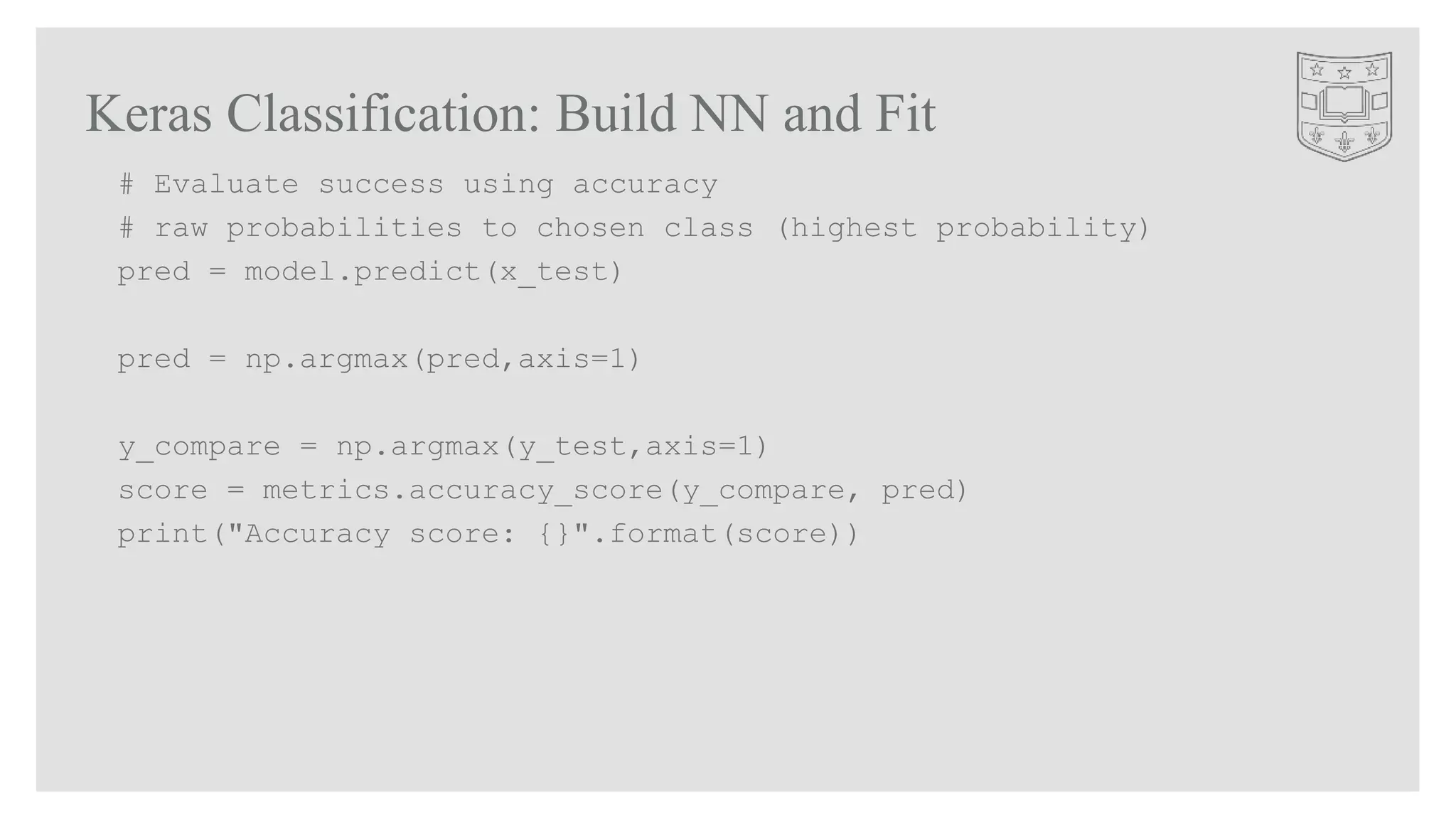
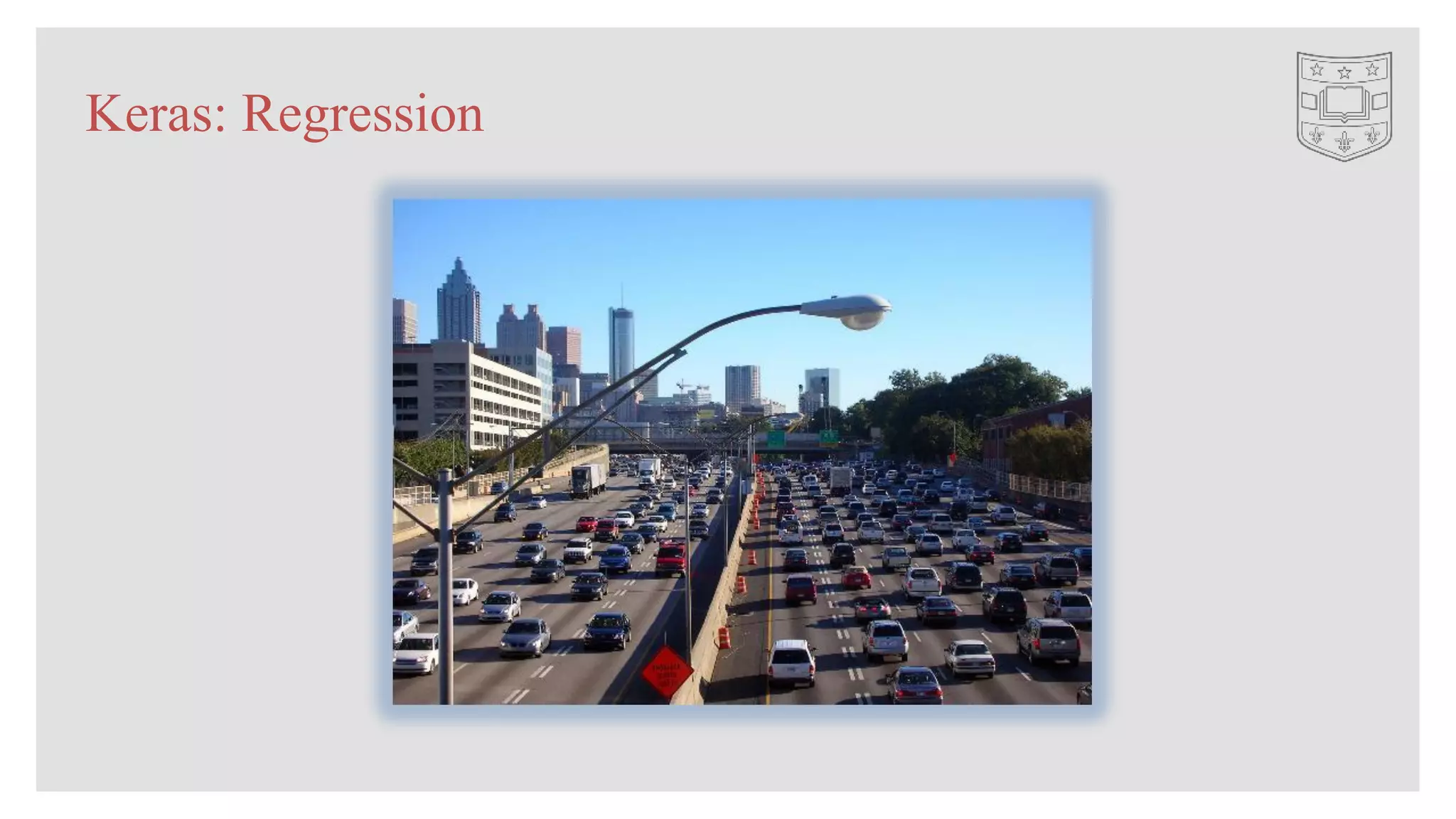
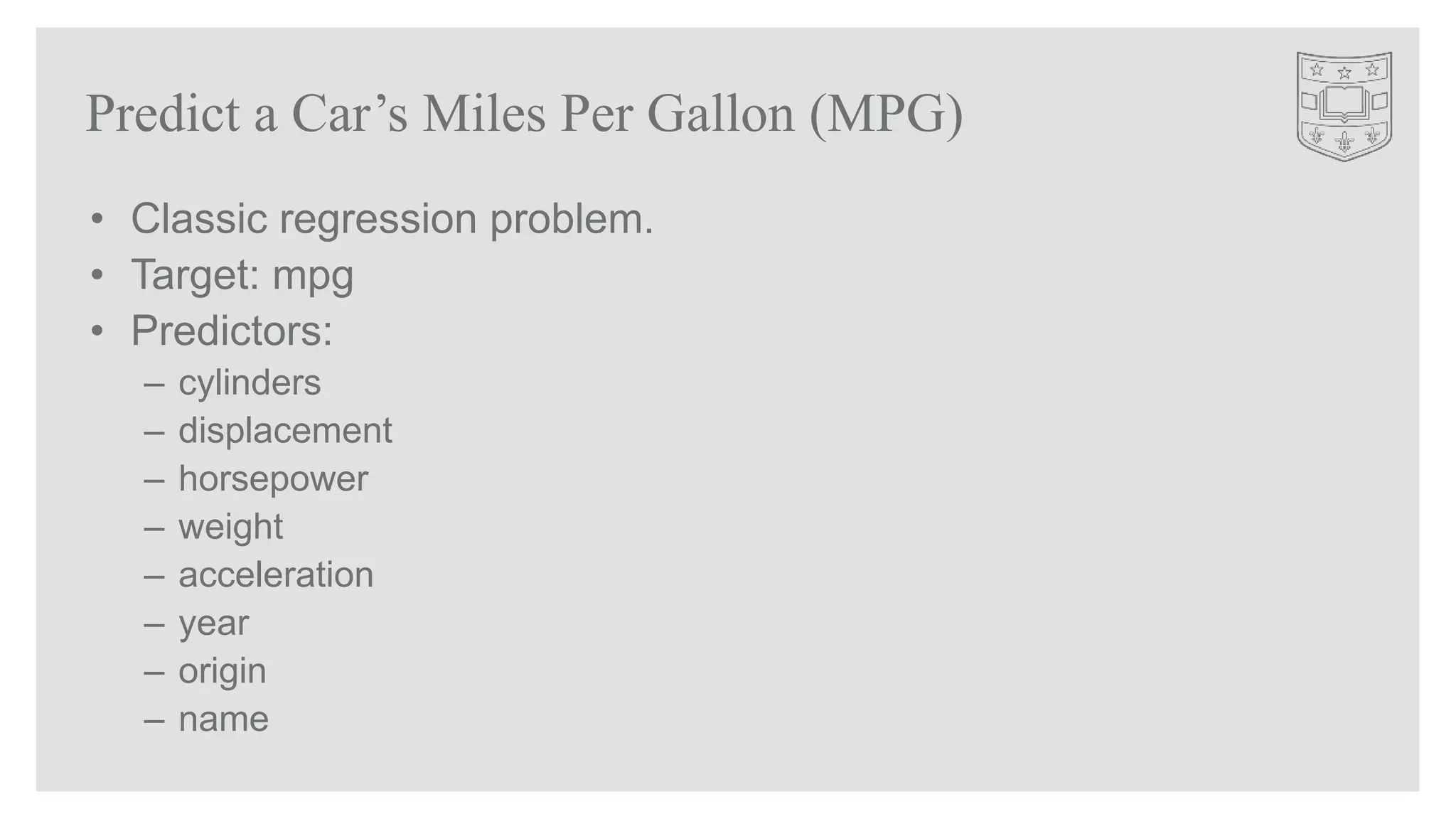
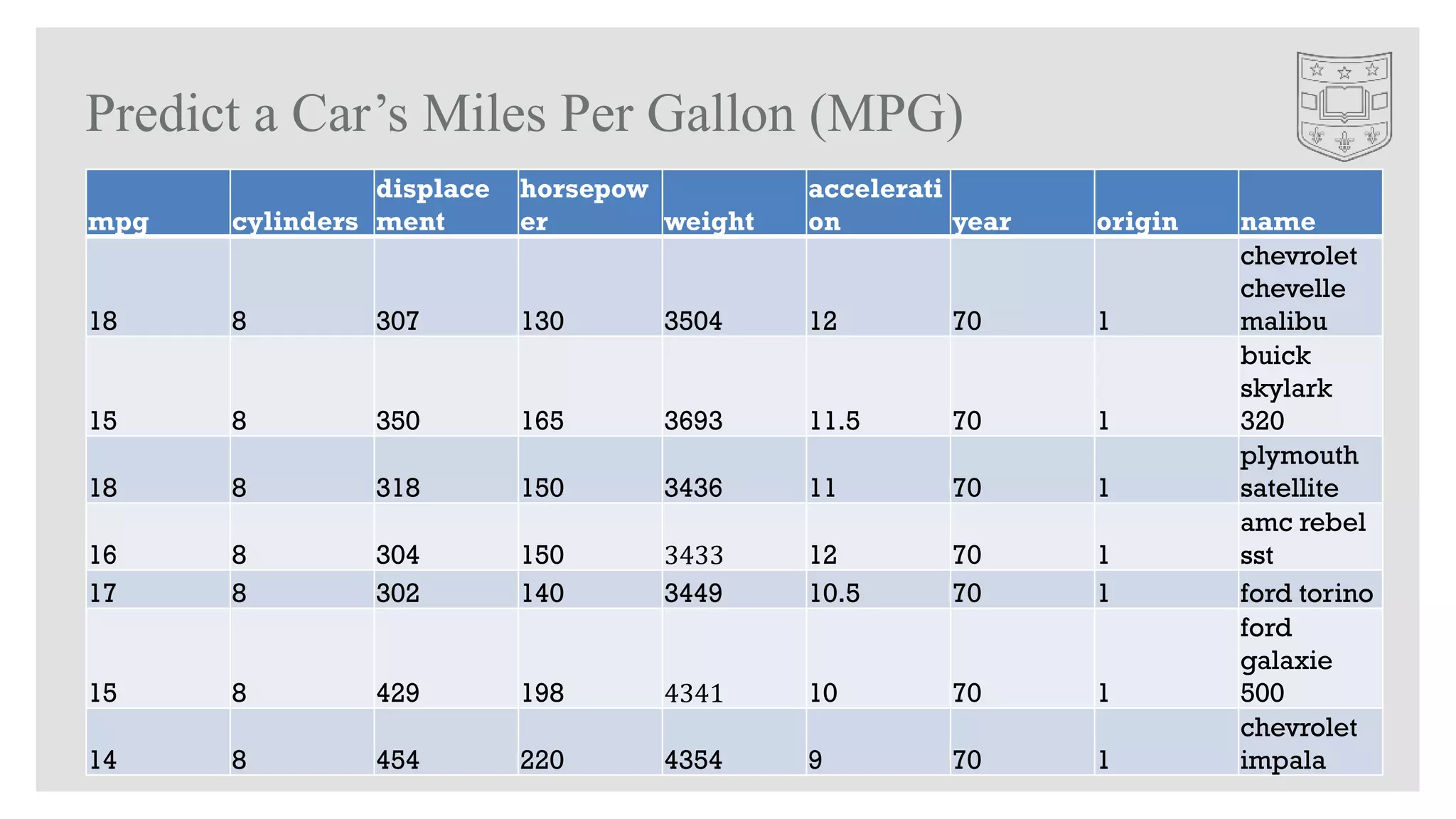
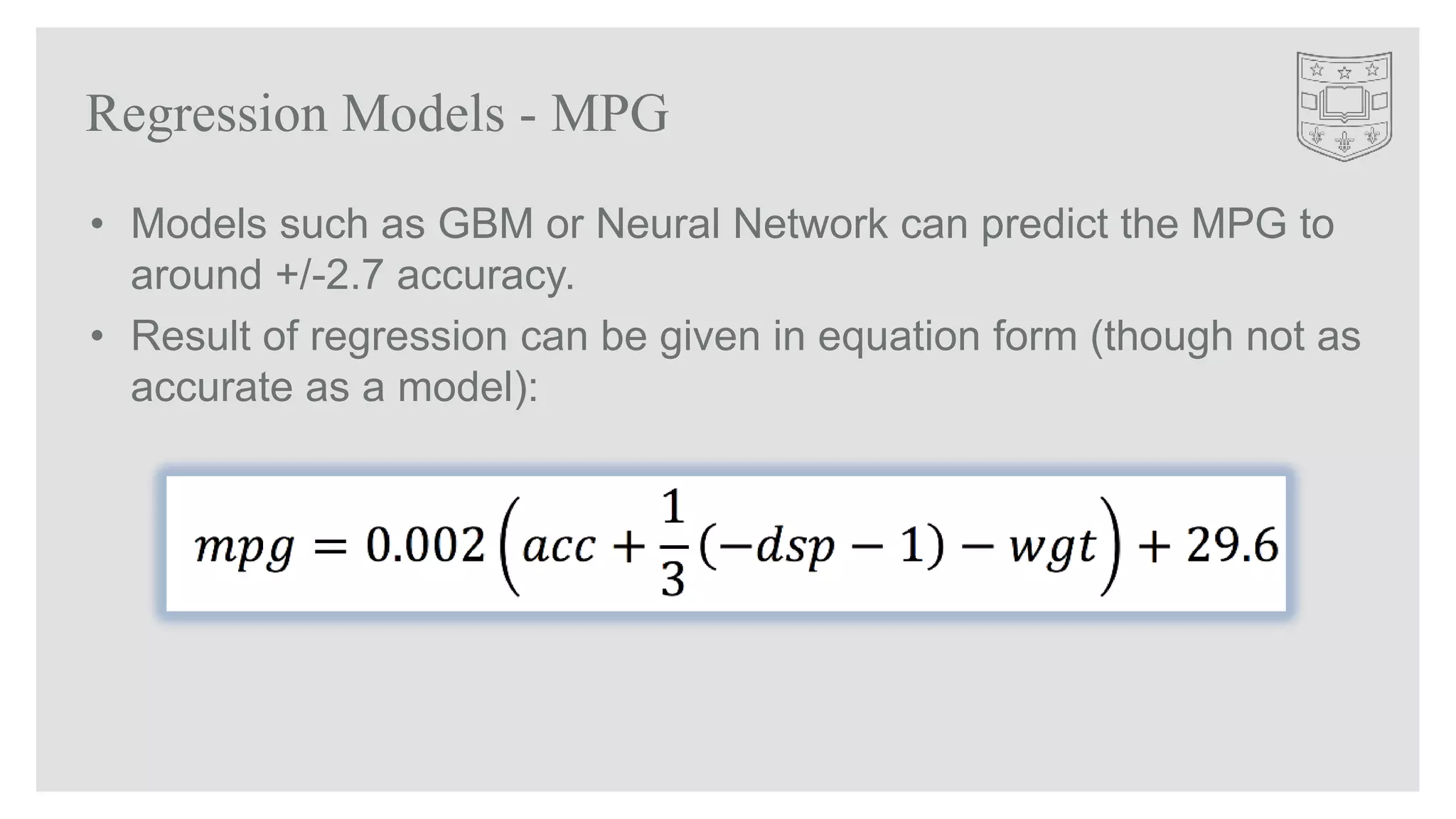
![Keras Regression: Load and Train/Test Split
path = "./data/"
filename_read = os.path.join(path,"auto-mpg.csv")
df = pd.read_csv(filename_read,na_values=['NA','?'])
cars = df['name']
df.drop('name',1,inplace=True)
missing_median(df, 'horsepower')
x,y = to_xy(df,"mpg")](https://image.slidesharecdn.com/gettingstartedwithkerasandtensorflow-stampedeconaisummit2017-171030121044/75/Getting-Started-with-Keras-and-TensorFlow-StampedeCon-AI-Summit-2017-38-2048.jpg)
![Keras Regression: Build and Fit
model = Sequential()
model.add(Dense(10, input_dim=x.shape[1],
kernel_initializer='normal', activation='relu'))
model.add(Dense(1, kernel_initializer='normal'))
model.compile(loss='mean_squared_error', optimizer='adam')
monitor = EarlyStopping(monitor='val_loss', min_delta=1e-3,
patience=5, verbose=1, mode='auto')
model.fit(x,y,validation_data=(x_test,y_test),callbacks=[monitor],ve
rbose=2,epochs=1000)](https://image.slidesharecdn.com/gettingstartedwithkerasandtensorflow-stampedeconaisummit2017-171030121044/75/Getting-Started-with-Keras-and-TensorFlow-StampedeCon-AI-Summit-2017-39-2048.jpg)
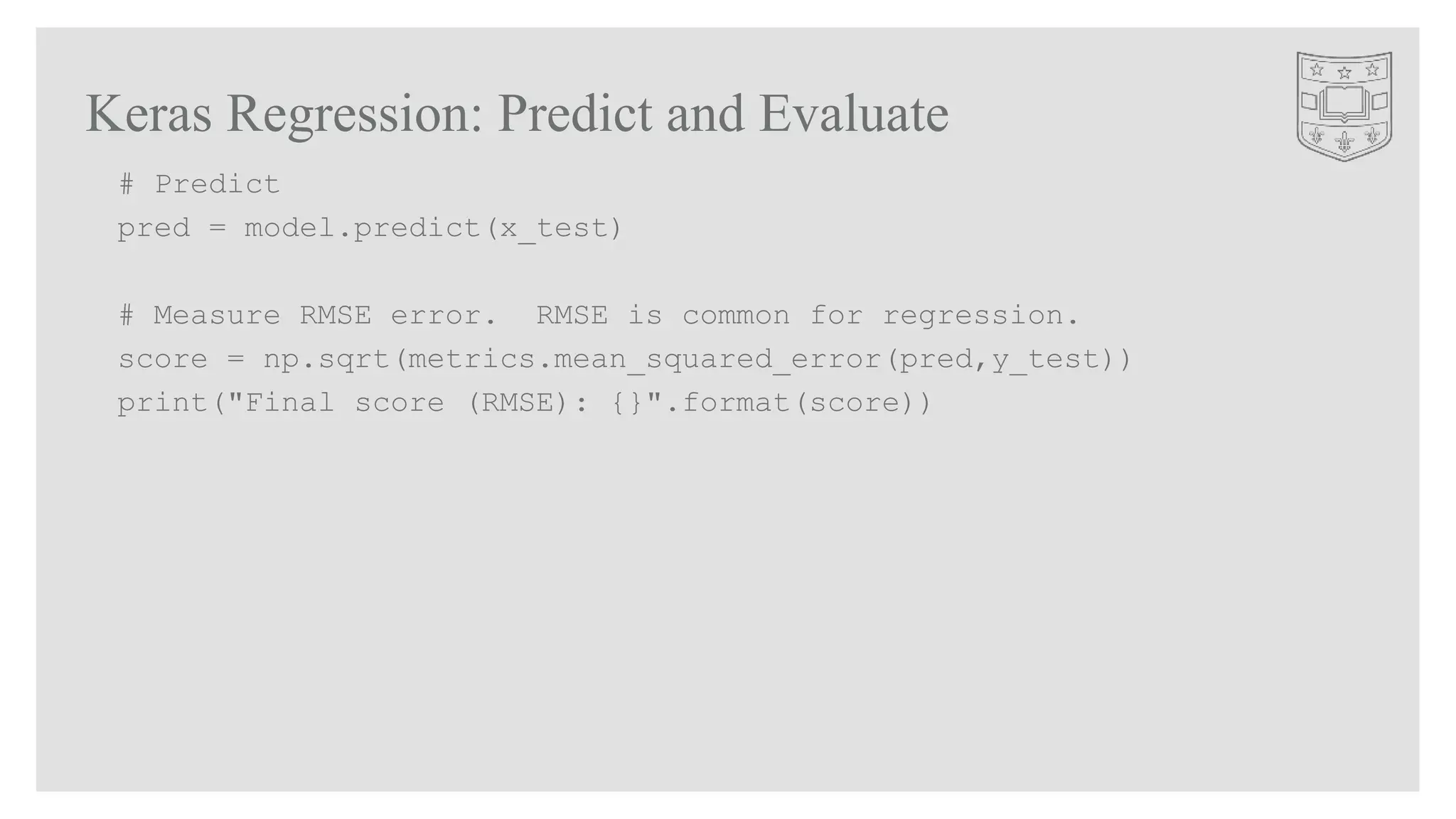
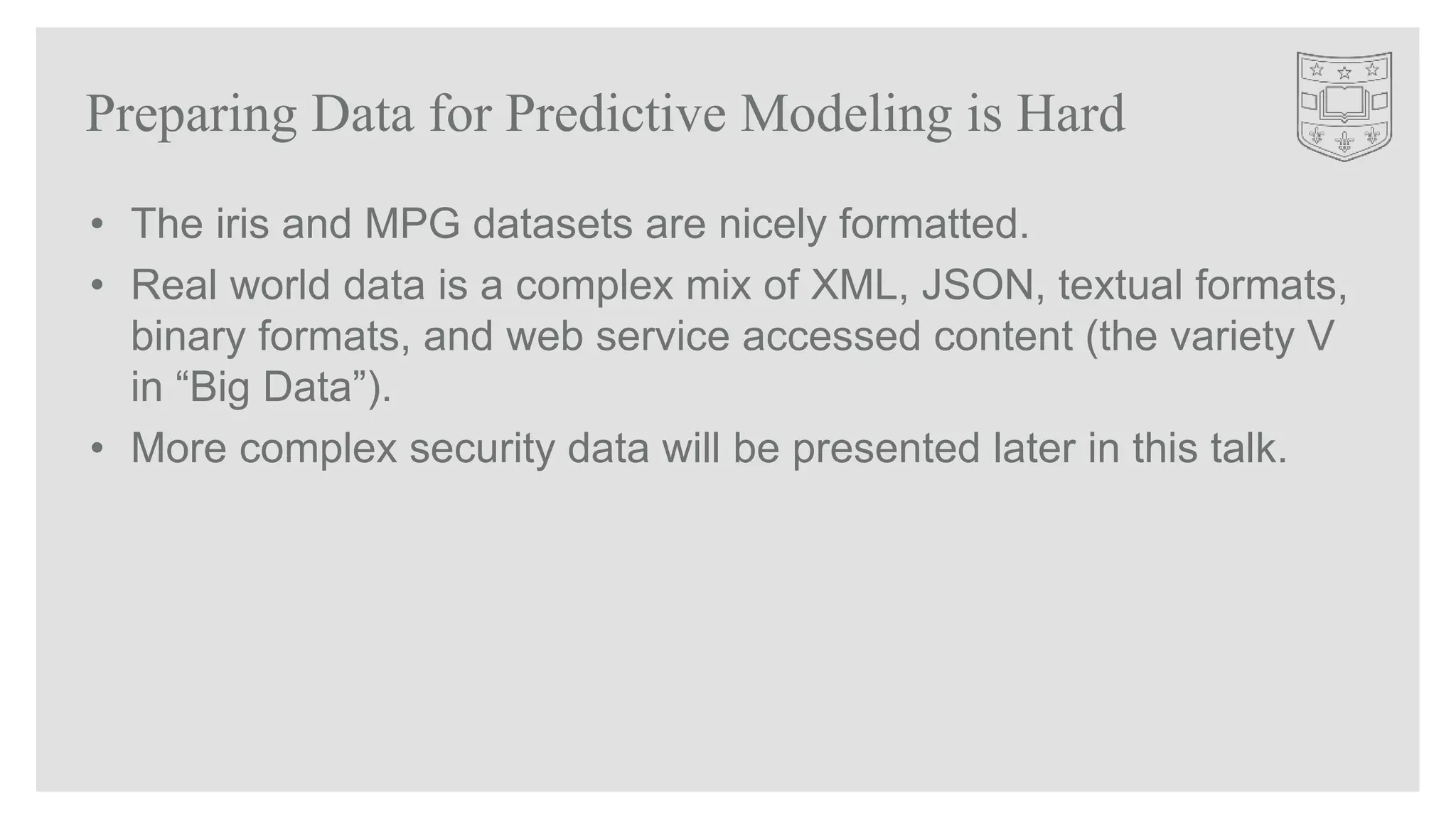
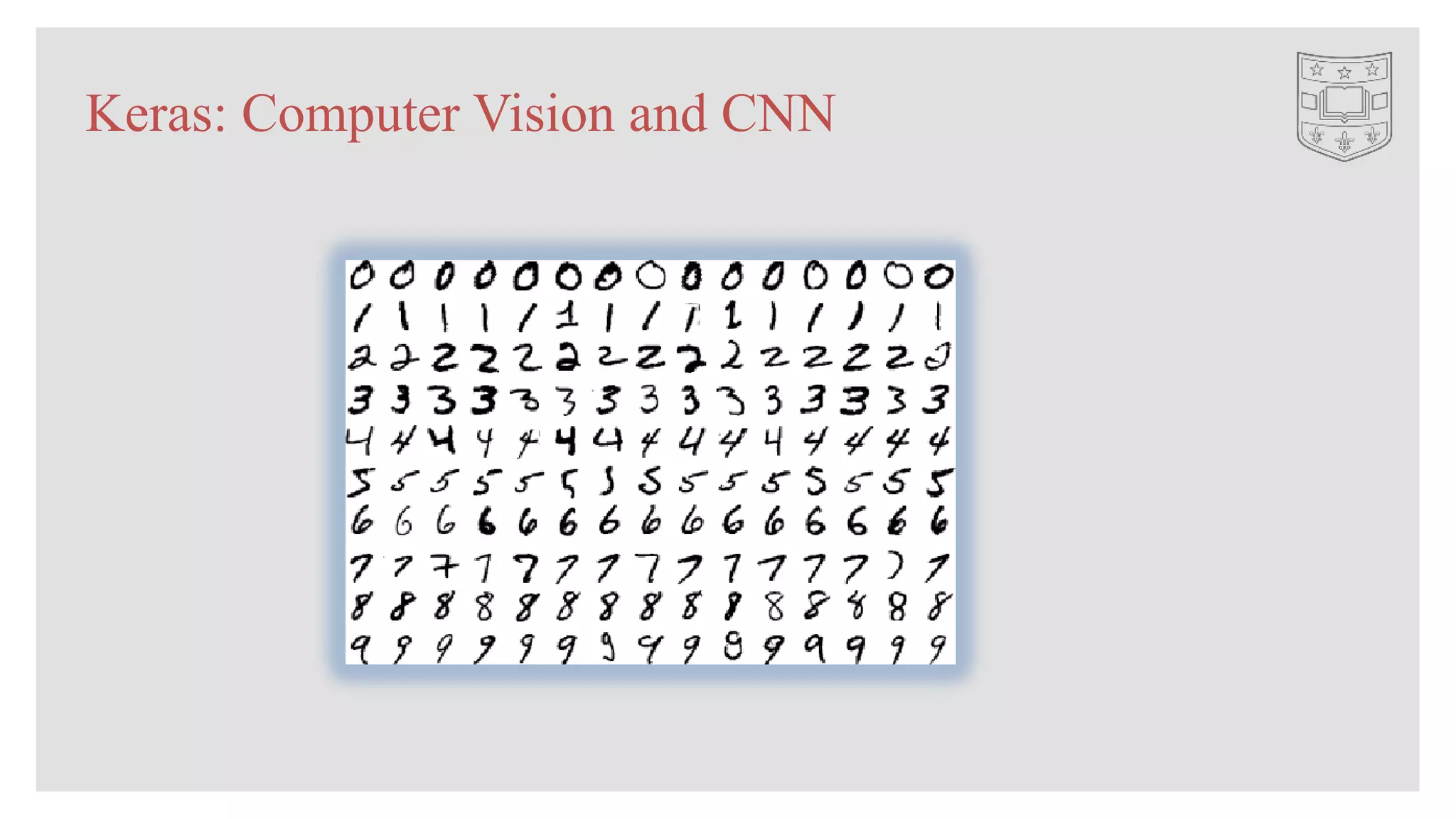

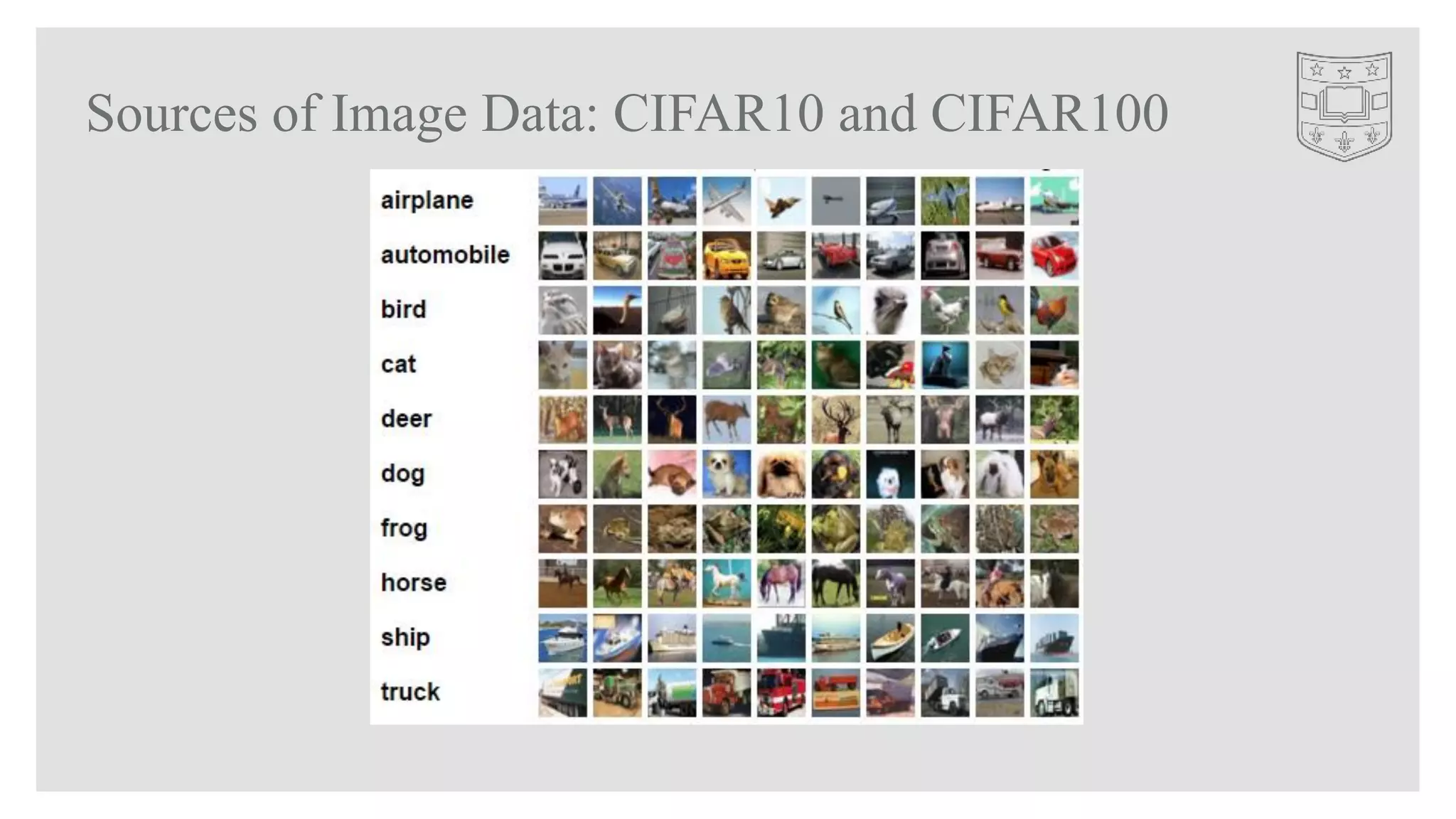
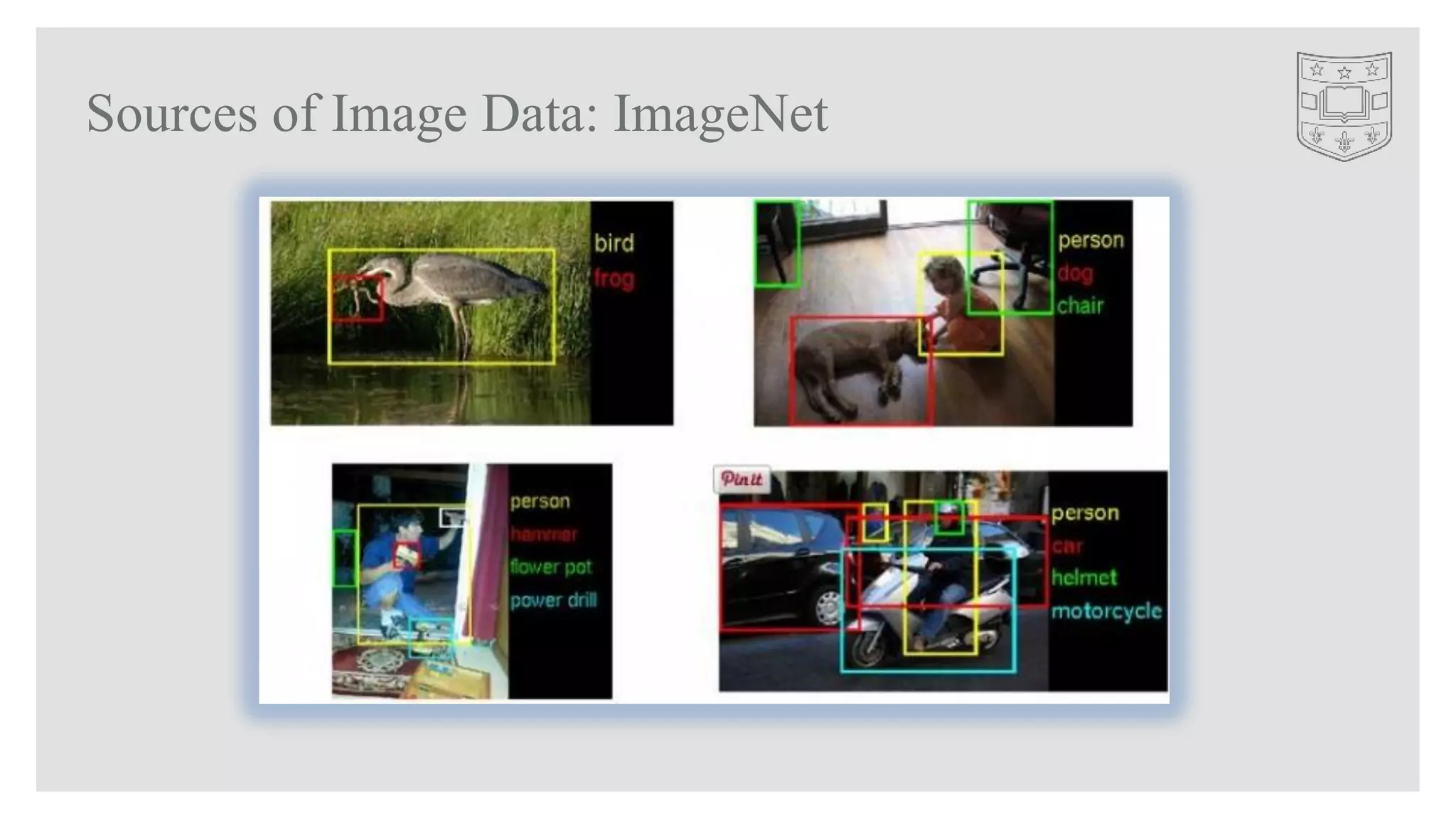


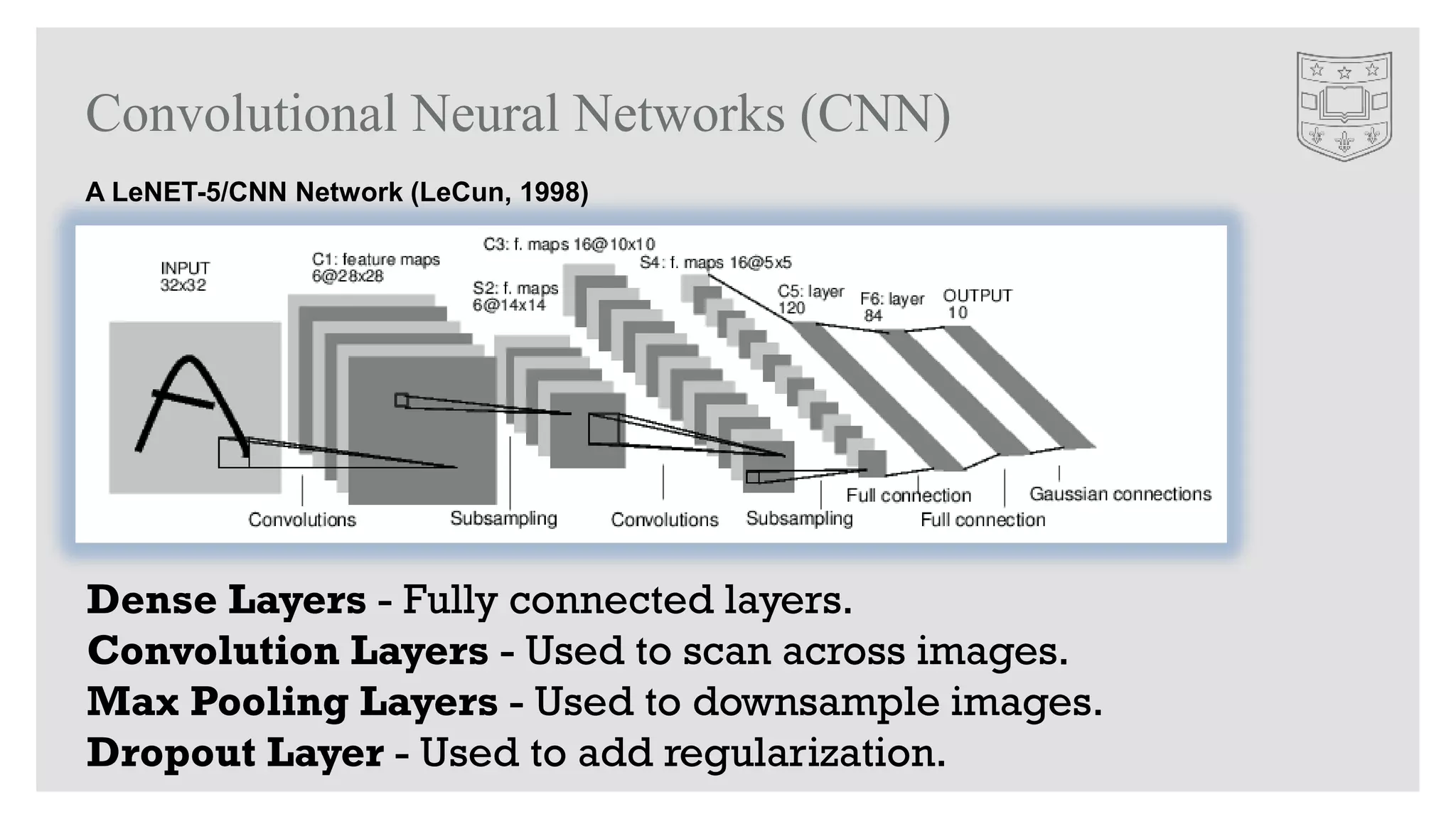
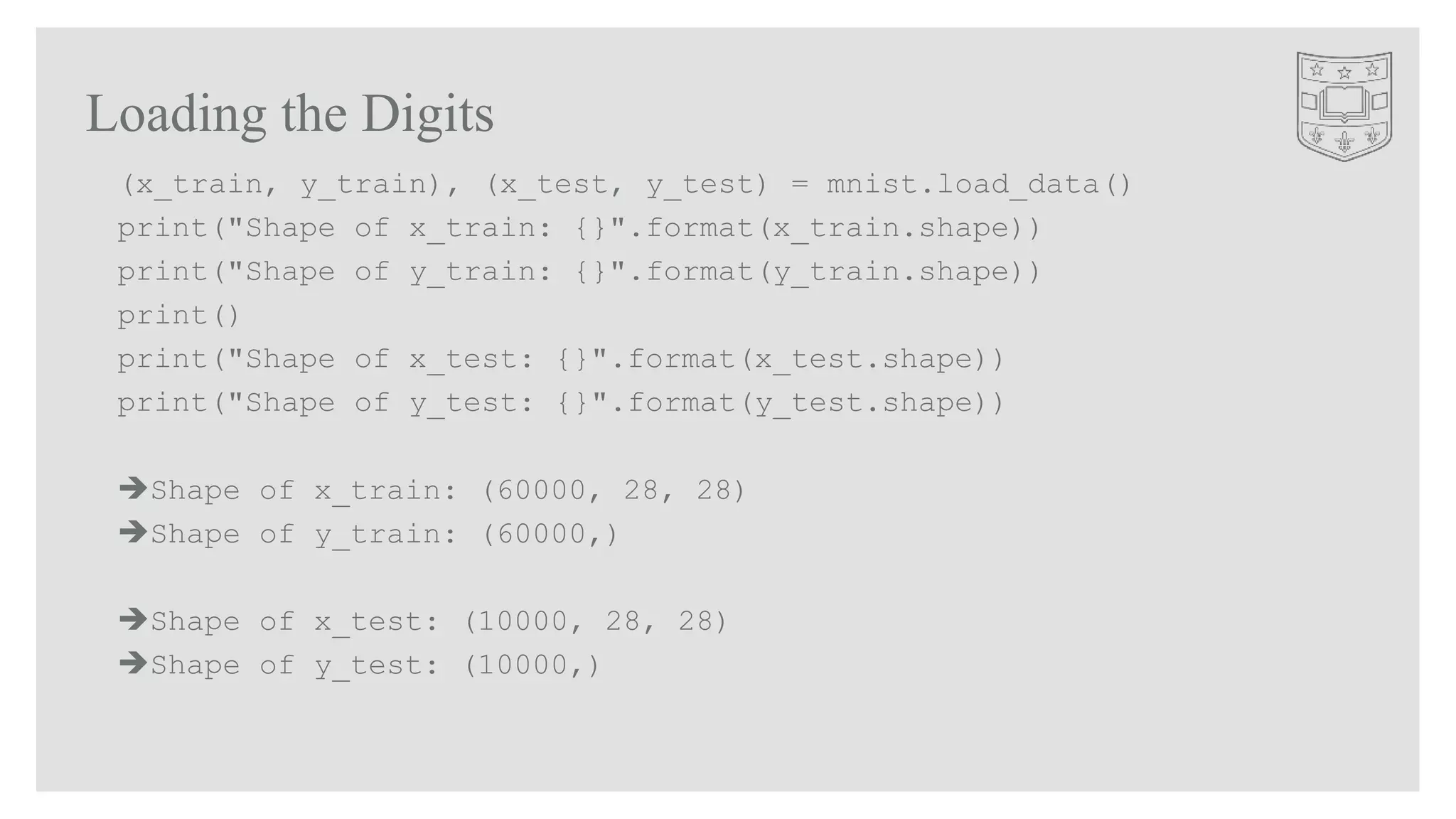
![Display a Digit
%matplotlib inline
import matplotlib.pyplot as plt
import numpy as np
digit = 101 # Change to choose new digit
a = x_train[digit]
plt.imshow(a, cmap='gray', interpolation='nearest')
print("Image (#{}): Which is digit '{}'".
format(digit,y_train[digit]))](https://image.slidesharecdn.com/gettingstartedwithkerasandtensorflow-stampedeconaisummit2017-171030121044/75/Getting-Started-with-Keras-and-TensorFlow-StampedeCon-AI-Summit-2017-50-2048.jpg)
![Build the CNN Network
model = Sequential()
model.add(Conv2D(32, kernel_size=(3, 3),
activation='relu',
input_shape=input_shape))
model.add(Conv2D(64, (3, 3), activation='relu'))
model.add(MaxPooling2D(pool_size=(2, 2)))
model.add(Dropout(0.25))
model.add(Flatten())
model.add(Dense(128, activation='relu'))
model.add(Dropout(0.5))
model.add(Dense(num_classes, activation='softmax'))
model.compile(loss=keras.losses.categorical_crossentropy,
optimizer=keras.optimizers.Adadelta(),
metrics=['accuracy'])](https://image.slidesharecdn.com/gettingstartedwithkerasandtensorflow-stampedeconaisummit2017-171030121044/75/Getting-Started-with-Keras-and-TensorFlow-StampedeCon-AI-Summit-2017-51-2048.jpg)
![Fit and Evaluate
model.fit(x_train, y_train,
batch_size=batch_size,
epochs=epochs,
verbose=2,
validation_data=(x_test, y_test))
score = model.evaluate(x_test, y_test, verbose=0)
print('Test loss: {}'.format(score[0]))
print('Test accuracy: {}'.format(score[1]))
Test loss: 0.03047790436172363
Test accuracy: 0.9902
Elapsed time: 1:30:40.79 (for CPU, approx 30 min GPU)](https://image.slidesharecdn.com/gettingstartedwithkerasandtensorflow-stampedeconaisummit2017-171030121044/75/Getting-Started-with-Keras-and-TensorFlow-StampedeCon-AI-Summit-2017-52-2048.jpg)
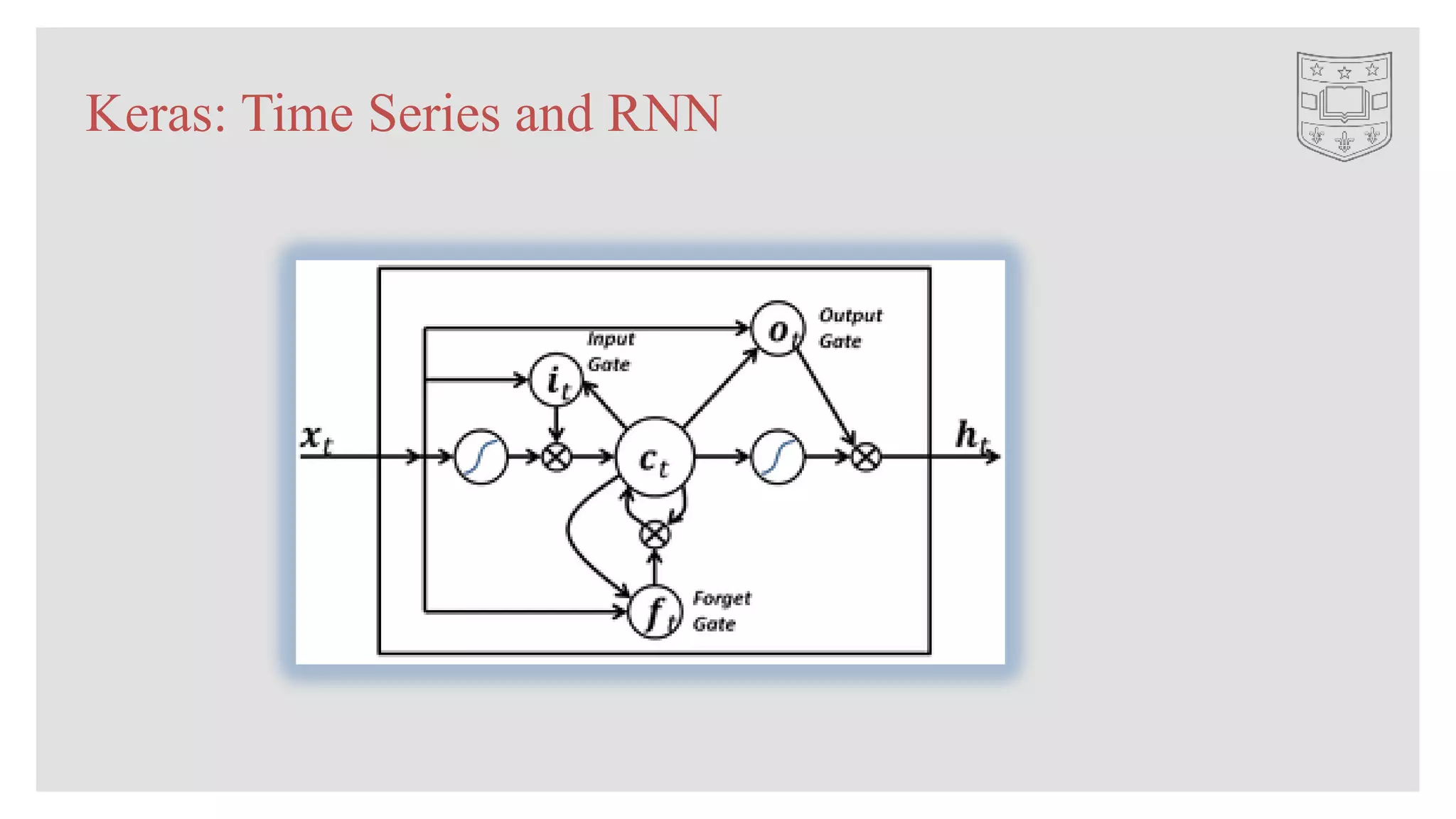
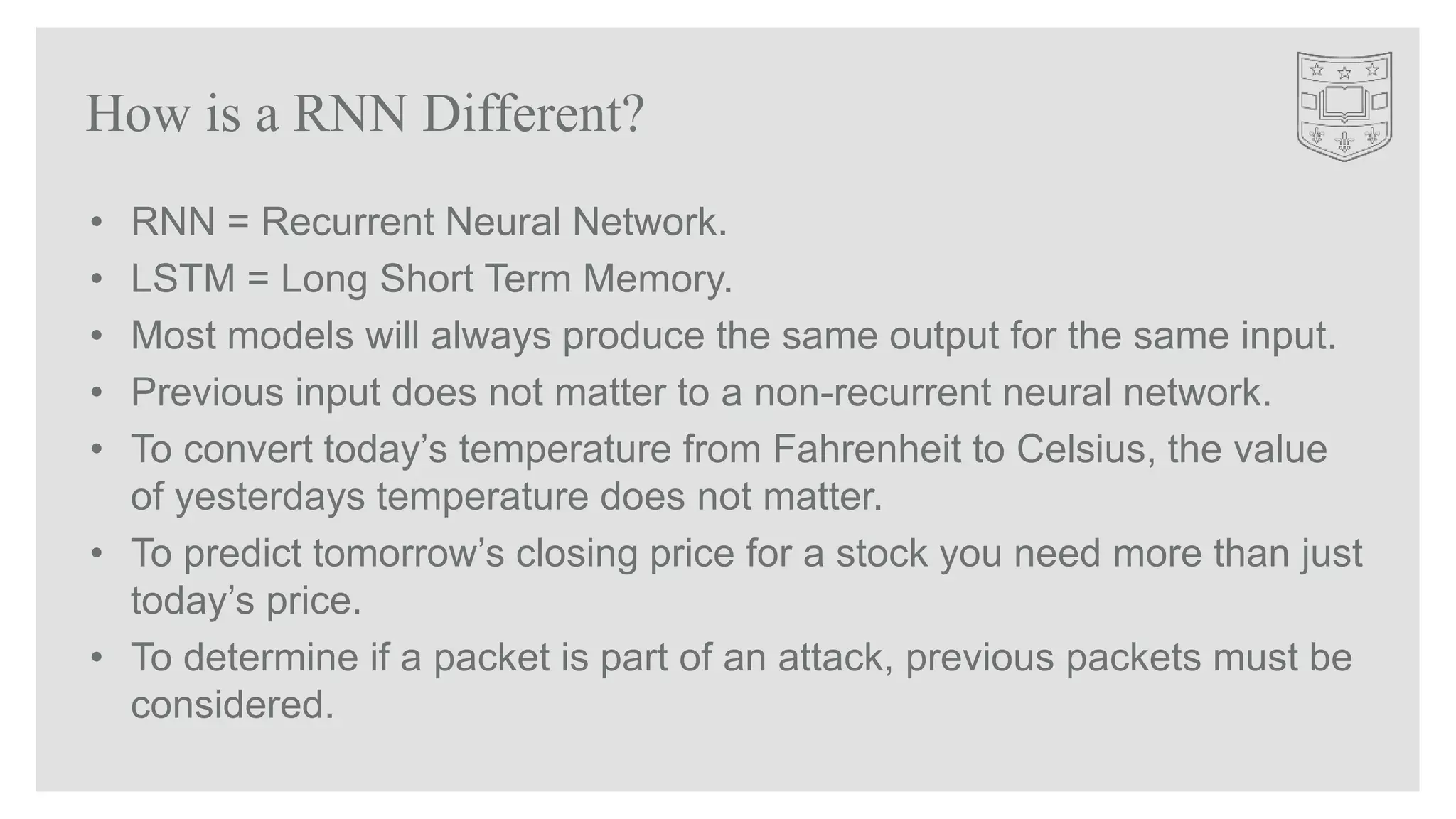

![Sample Recurrent Data: Stock Price & Volume
x = [
[[32,1383],[41,2928],[39,8823],[20,1252],[15,1532]],
[[35,8272],[32,1383],[41,2928],[39,8823],[20,1252]],
[[37,2738],[35,8272],[32,1383],[41,2928],[39,8823]],
[[34,2845],[37,2738],[35,8272],[32,1383],[41,2928]],
[[32,2345],[34,2845],[37,2738],[35,8272],[32,1383]],
]
y = [
1,
-1,
0,
-1,
1
]](https://image.slidesharecdn.com/gettingstartedwithkerasandtensorflow-stampedeconaisummit2017-171030121044/75/Getting-Started-with-Keras-and-TensorFlow-StampedeCon-AI-Summit-2017-56-2048.jpg)
![LSTM Example
max_features = 4 # 0,1,2,3 (total of 4)
x = [
[[0],[1],[1],[0],[0],[0]],
[[0],[0],[0],[2],[2],[0]],
[[0],[0],[0],[0],[3],[3]],
[[0],[2],[2],[0],[0],[0]],
[[0],[0],[3],[3],[0],[0]],
[[0],[0],[0],[0],[1],[1]]
]
x = np.array(x,dtype=np.float32)
y = np.array([1,2,3,2,3,1],dtype=np.int32)](https://image.slidesharecdn.com/gettingstartedwithkerasandtensorflow-stampedeconaisummit2017-171030121044/75/Getting-Started-with-Keras-and-TensorFlow-StampedeCon-AI-Summit-2017-57-2048.jpg)
![Build a LSTM
model = Sequential()
model.add(LSTM(128, dropout=0.2, recurrent_dropout=0.2,
input_dim=1))
model.add(Dense(4, activation='sigmoid'))
model.compile(loss='binary_crossentropy',
optimizer='adam',
metrics=['accuracy'])](https://image.slidesharecdn.com/gettingstartedwithkerasandtensorflow-stampedeconaisummit2017-171030121044/75/Getting-Started-with-Keras-and-TensorFlow-StampedeCon-AI-Summit-2017-58-2048.jpg)
![Test the LSTM
def runit(model, inp):
inp = np.array(inp,dtype=np.float32)
pred = model.predict(inp)
return np.argmax(pred[0])
print( runit( model, [[[0],[0],[0],[0],[3],[3]]] ))
3
print( runit( model, [[[4],[4],[0],[0],[0],[0]]] ))
4](https://image.slidesharecdn.com/gettingstartedwithkerasandtensorflow-stampedeconaisummit2017-171030121044/75/Getting-Started-with-Keras-and-TensorFlow-StampedeCon-AI-Summit-2017-59-2048.jpg)
